
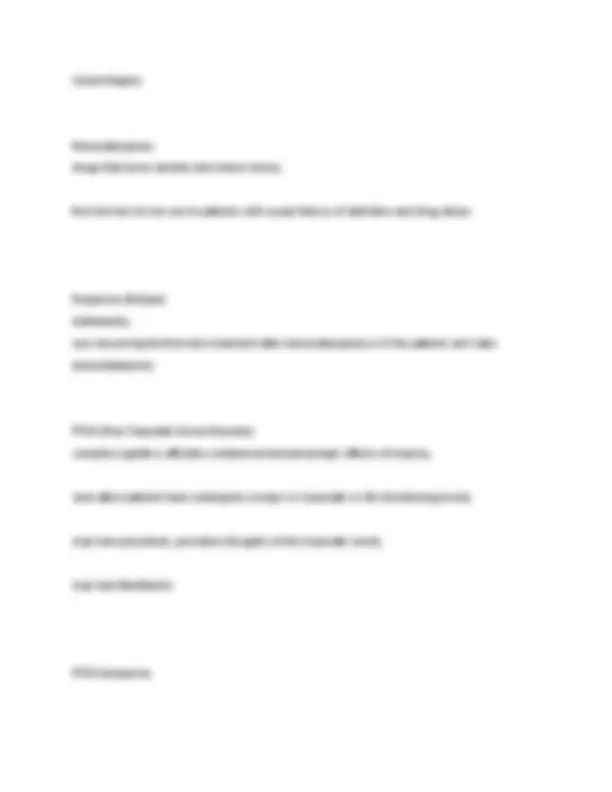
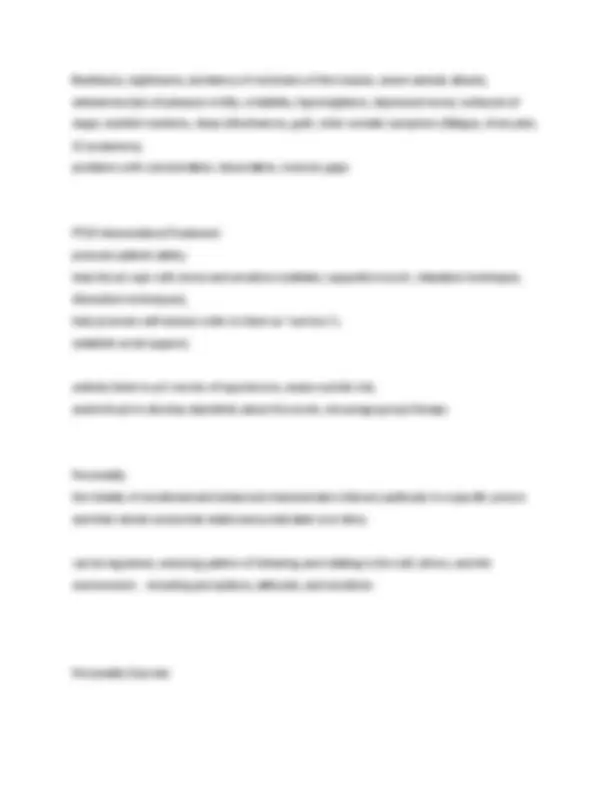
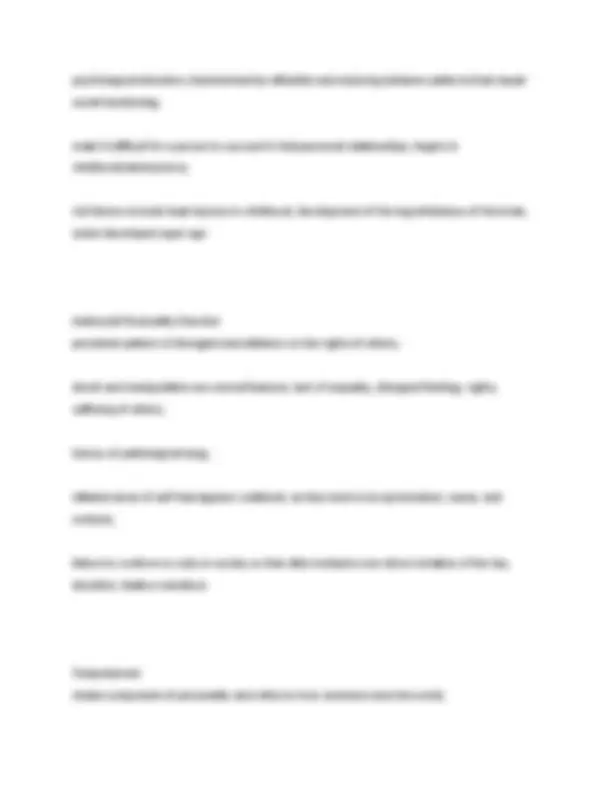
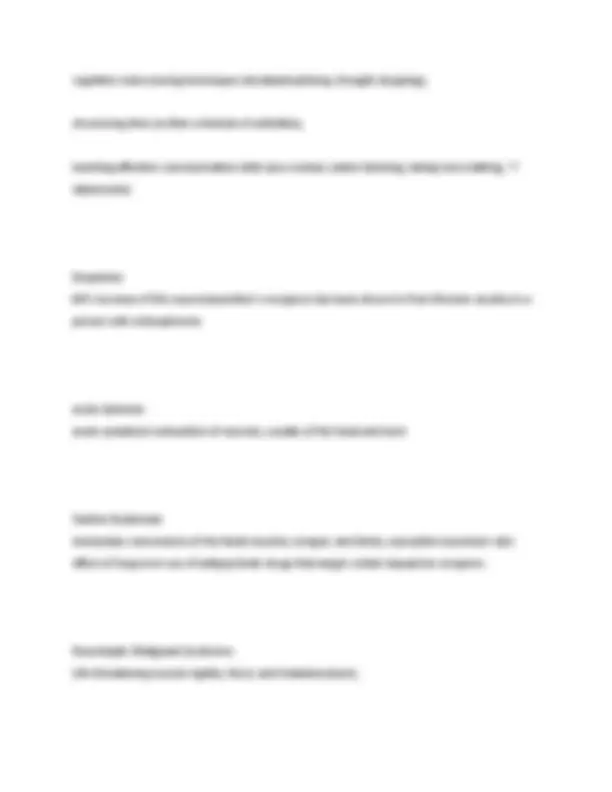
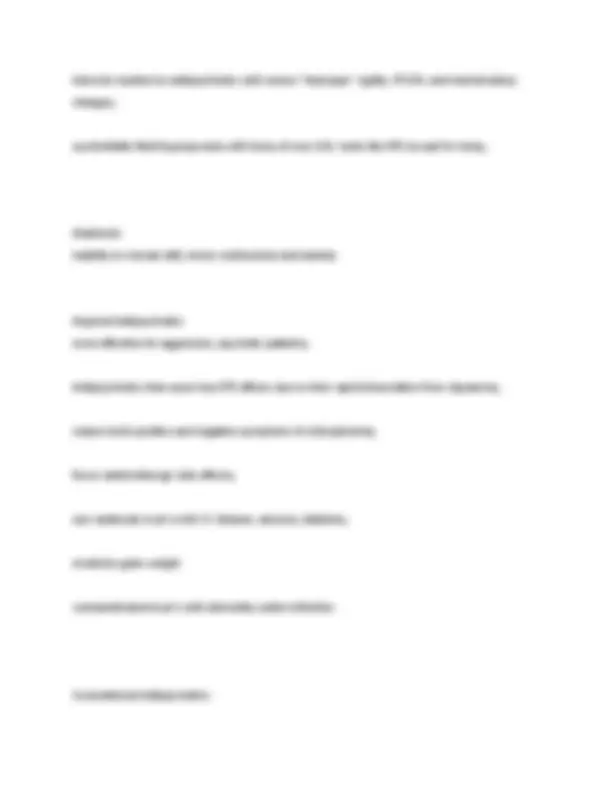
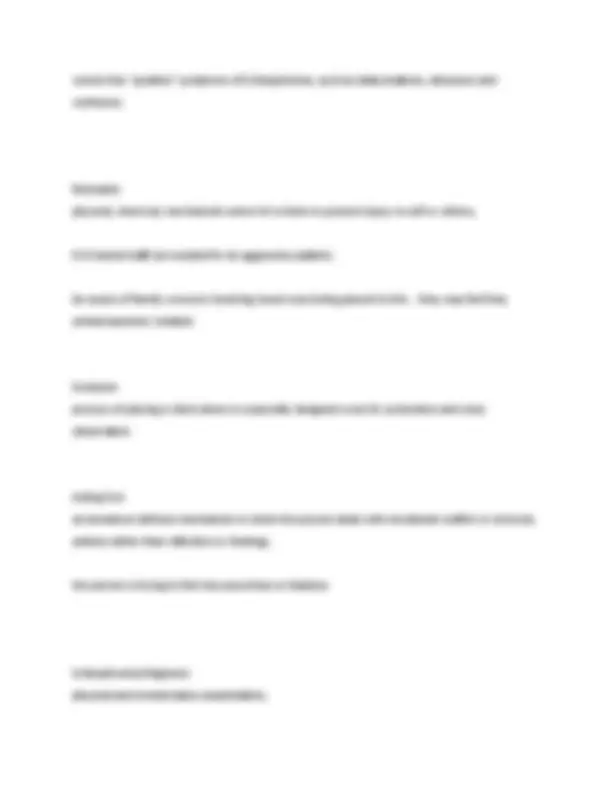
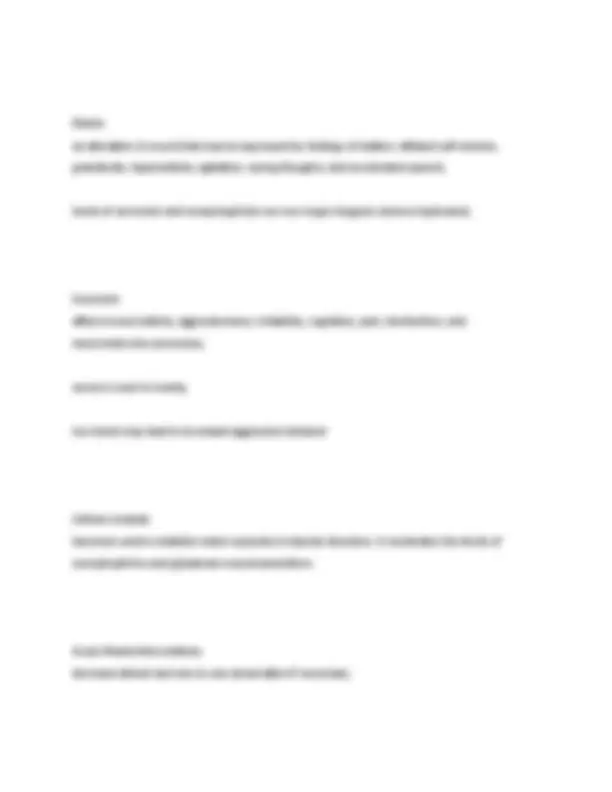
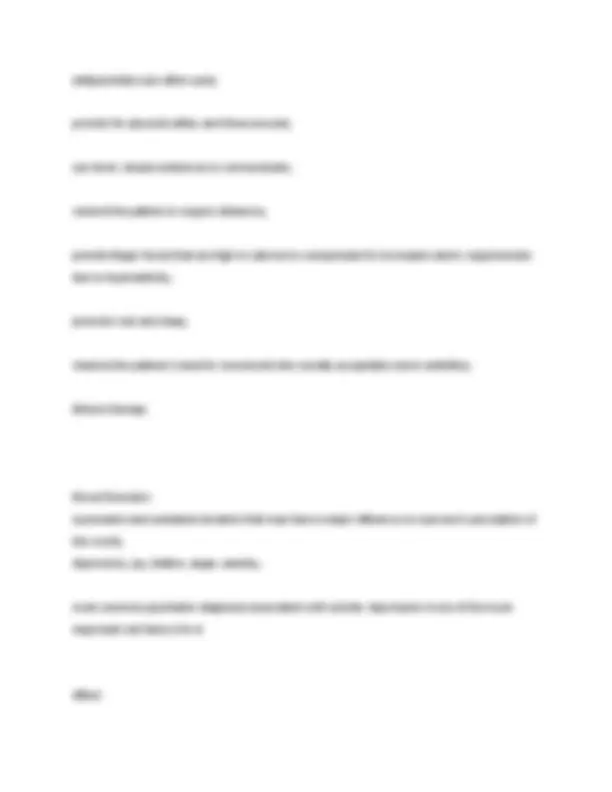
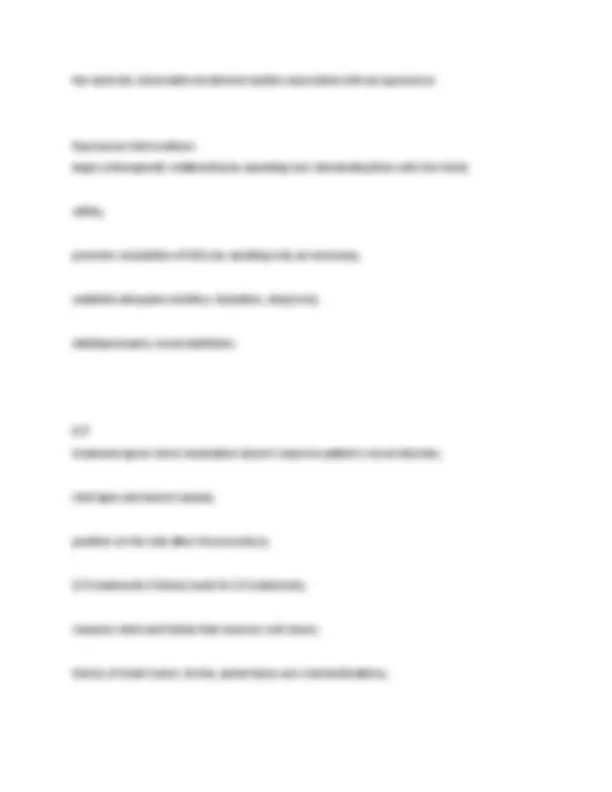
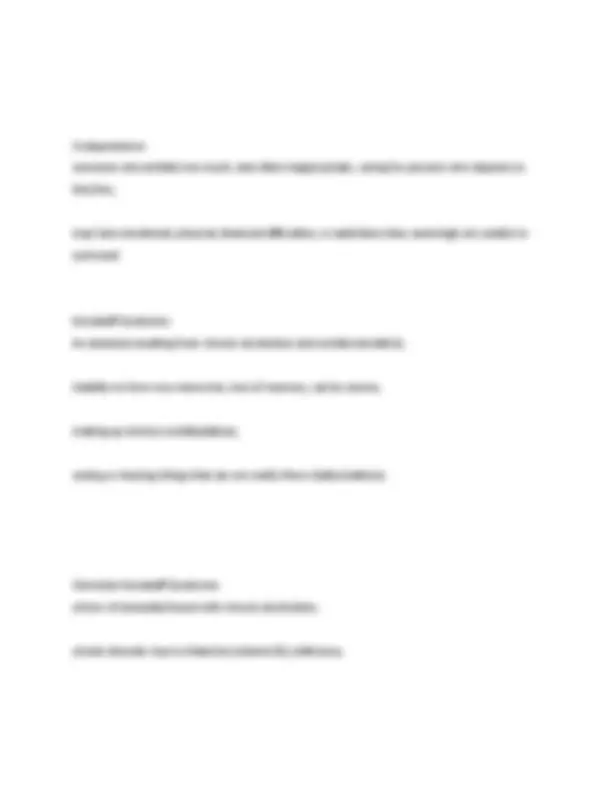

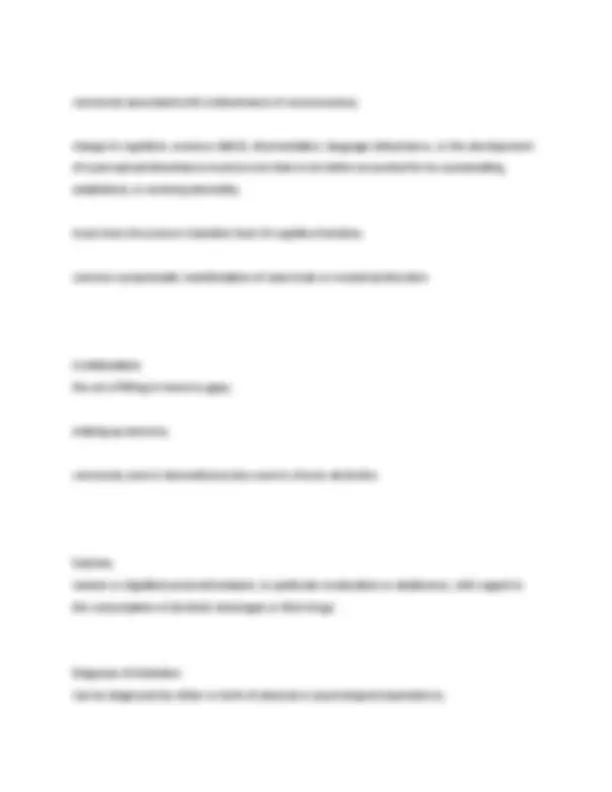
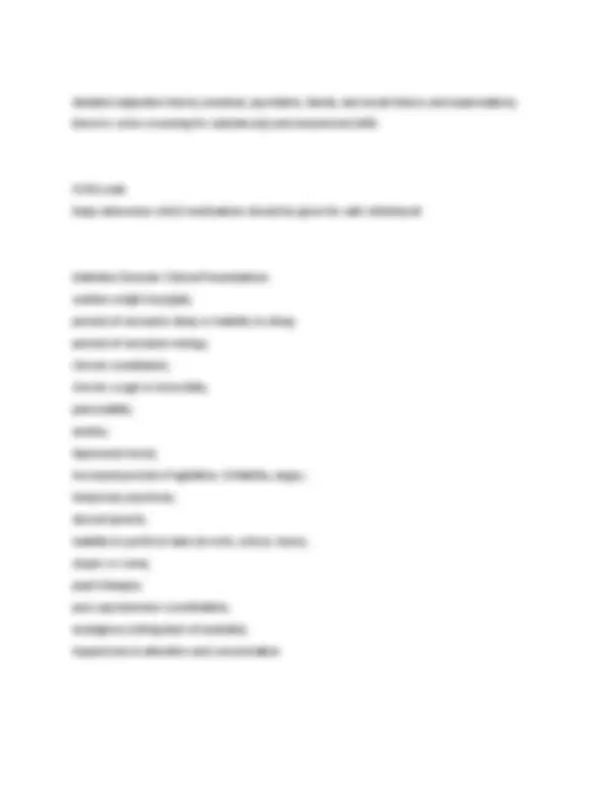
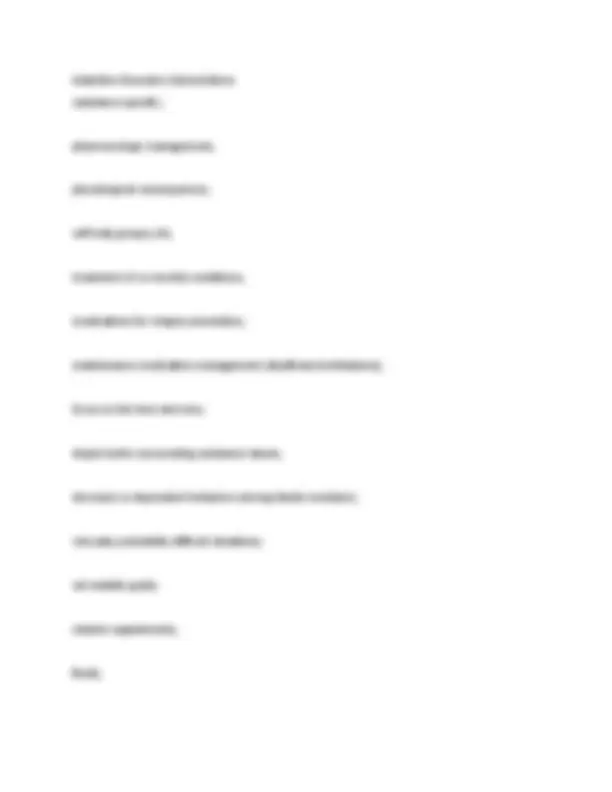
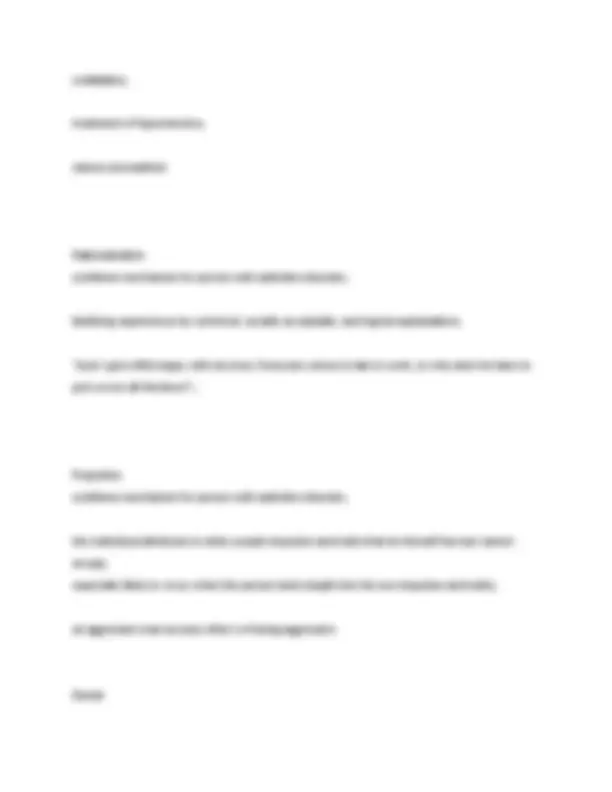
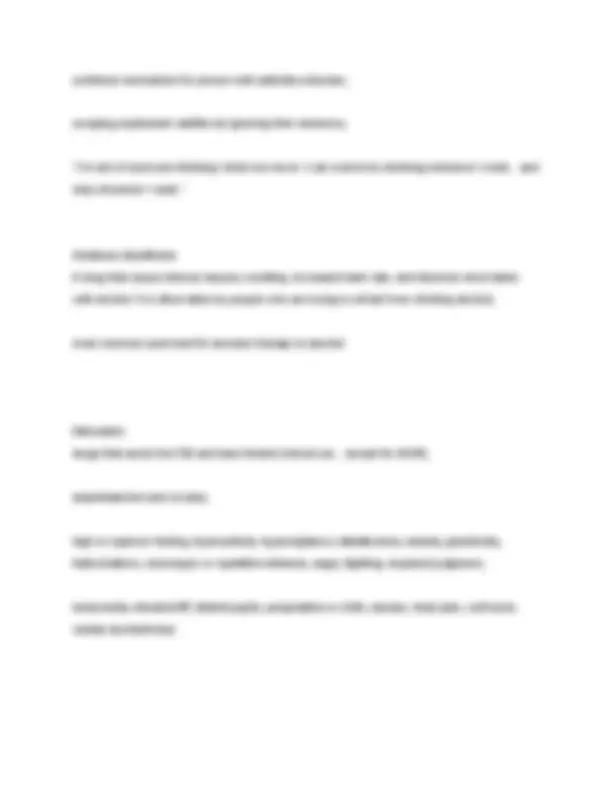
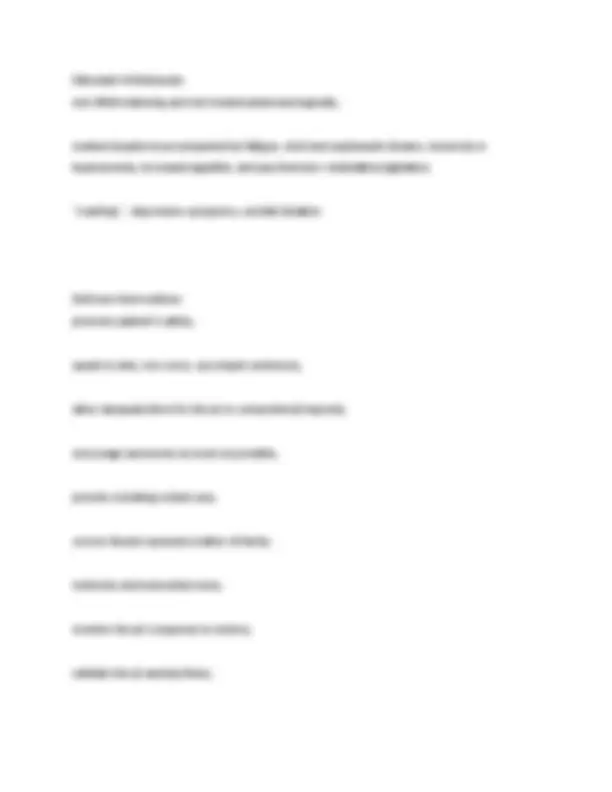
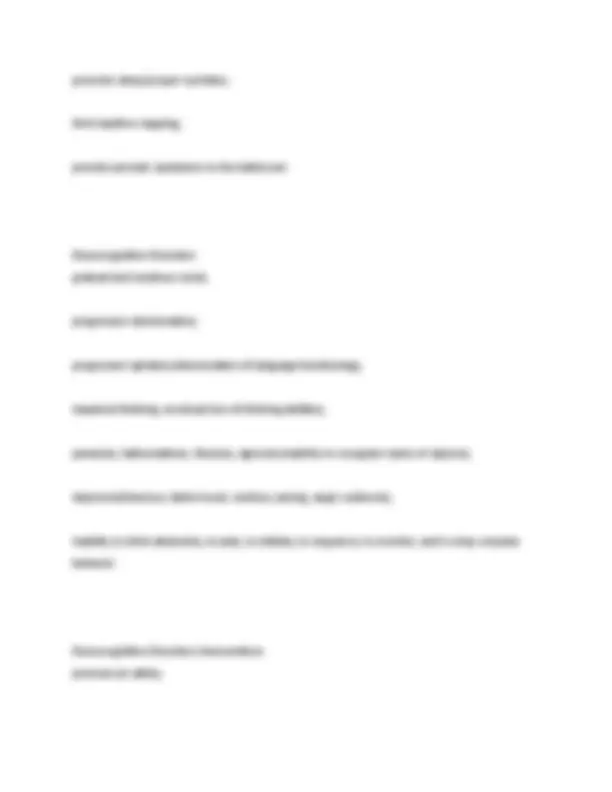
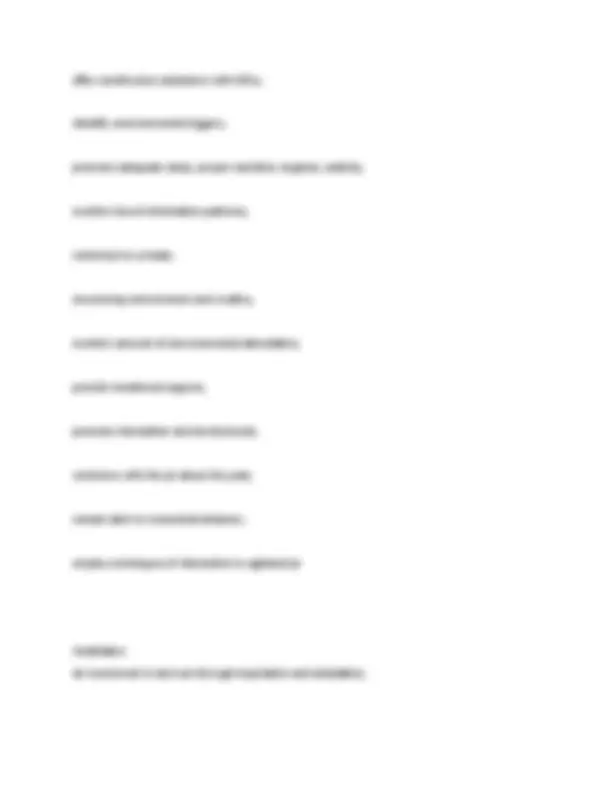
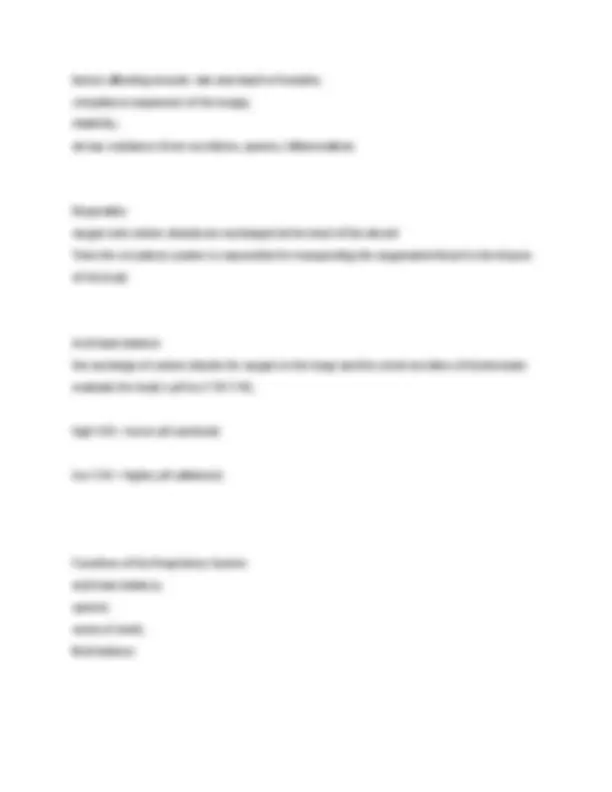
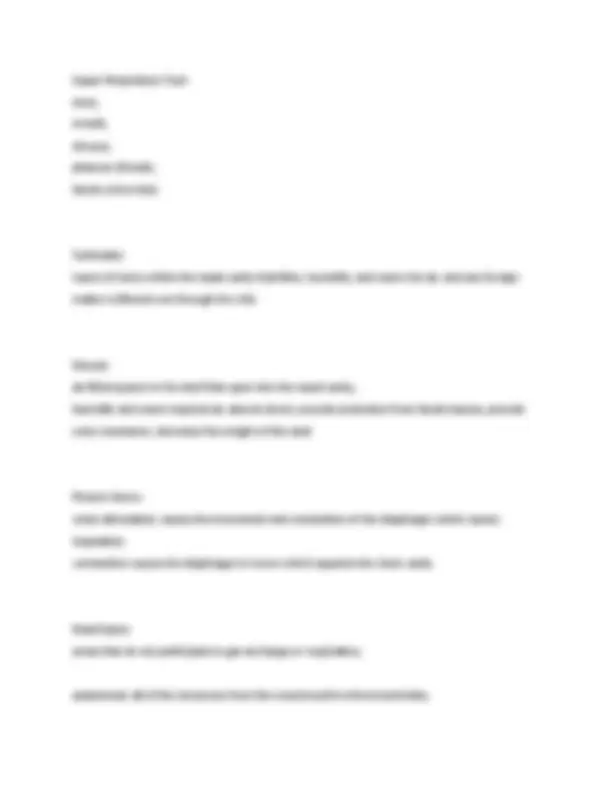
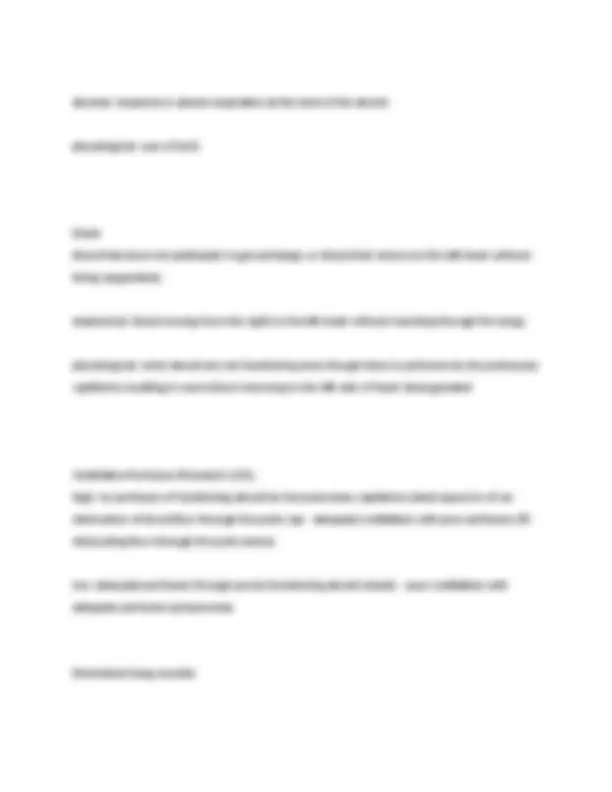
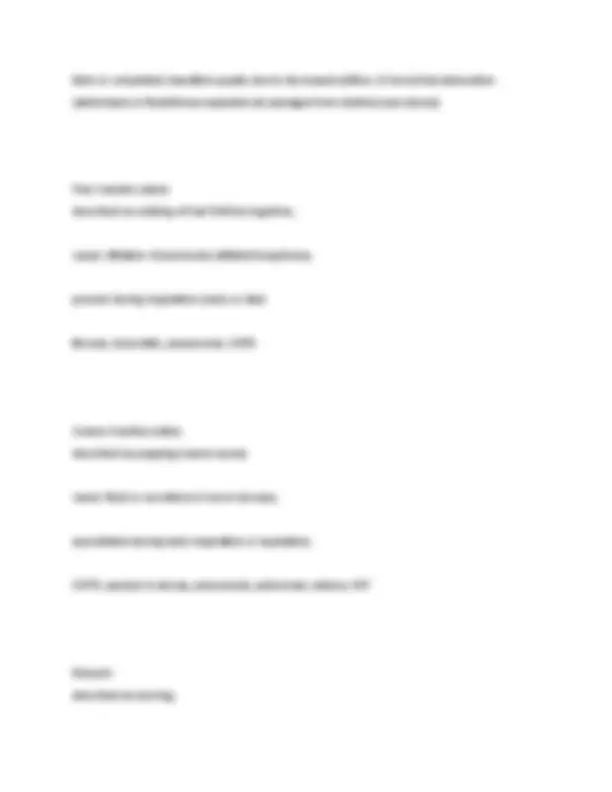
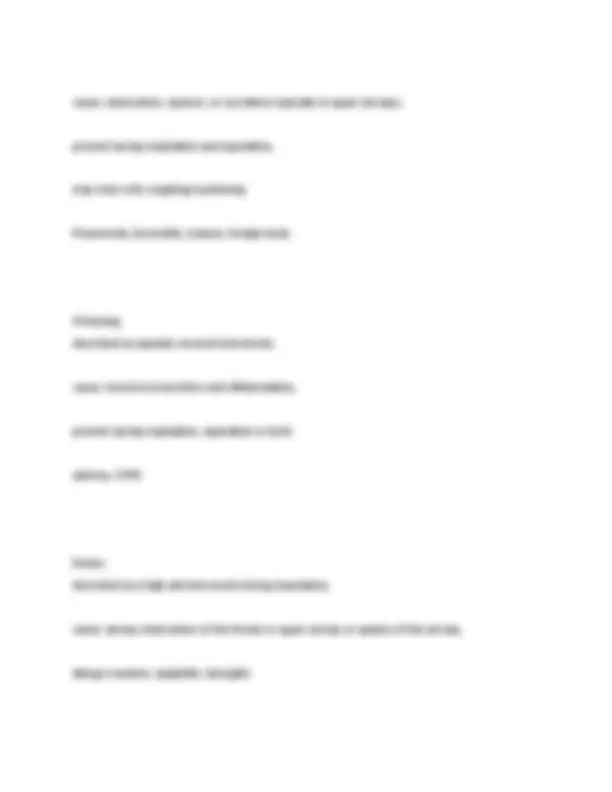
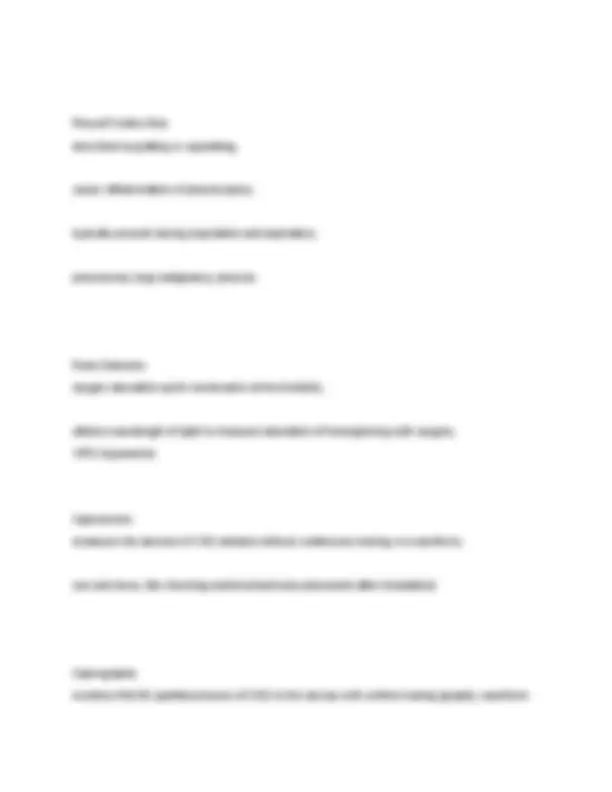
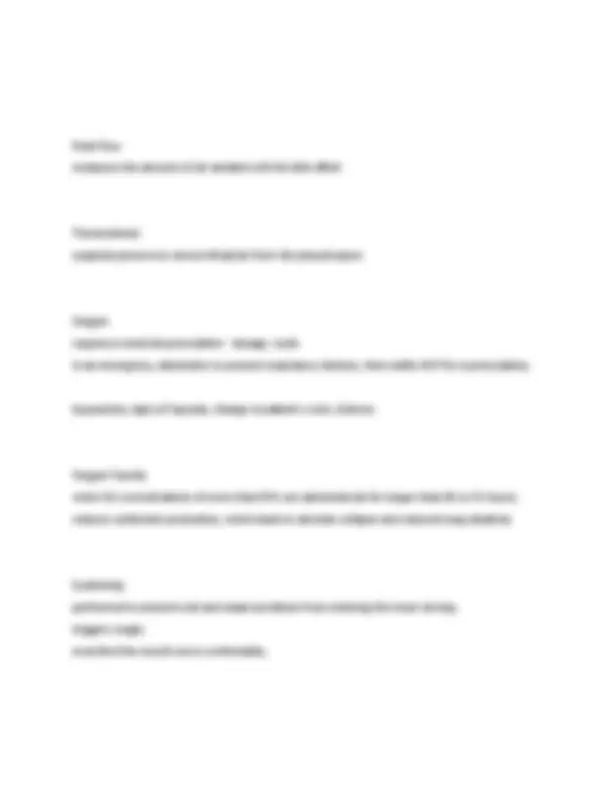
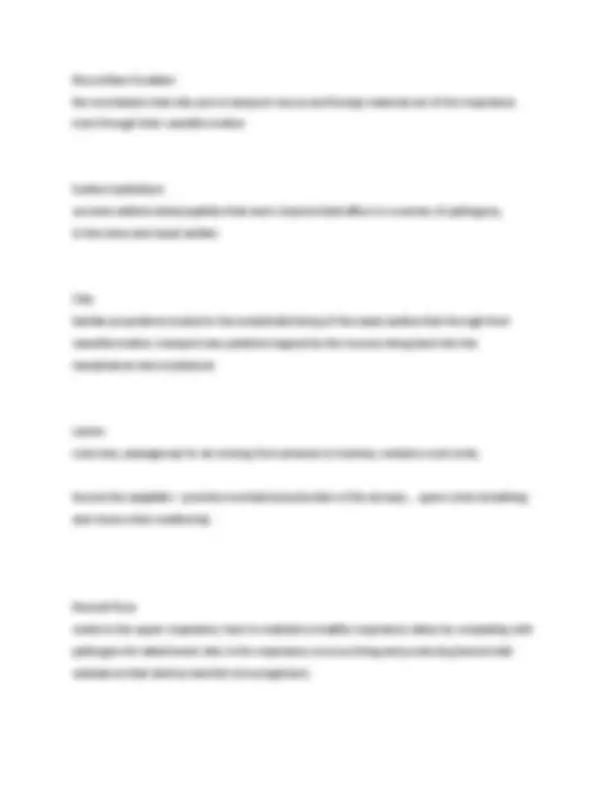
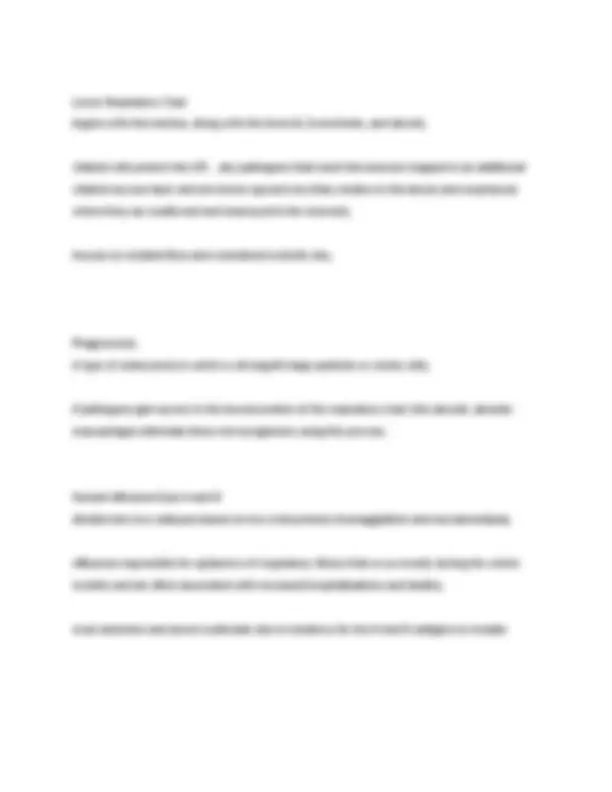
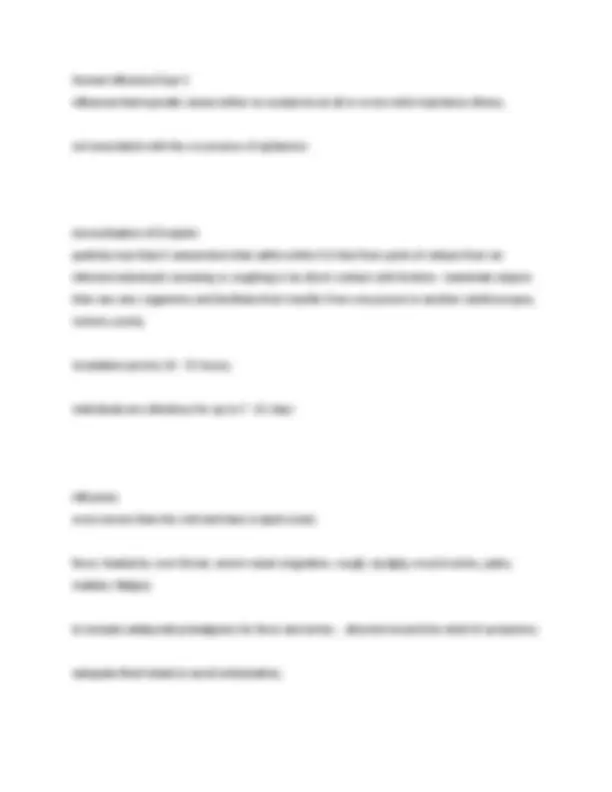
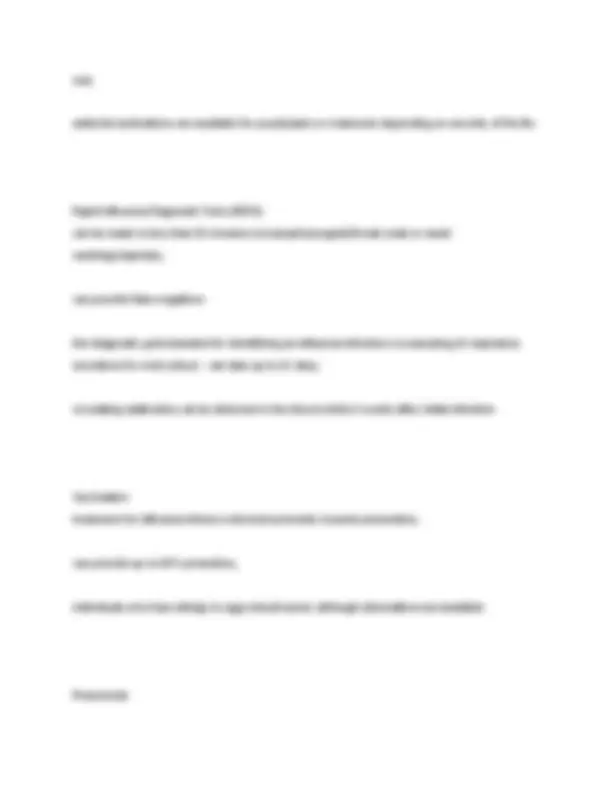
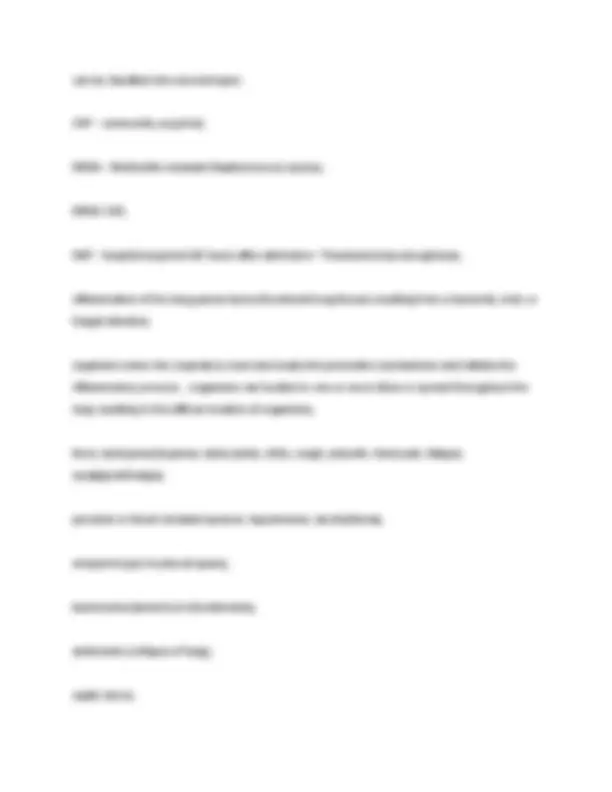
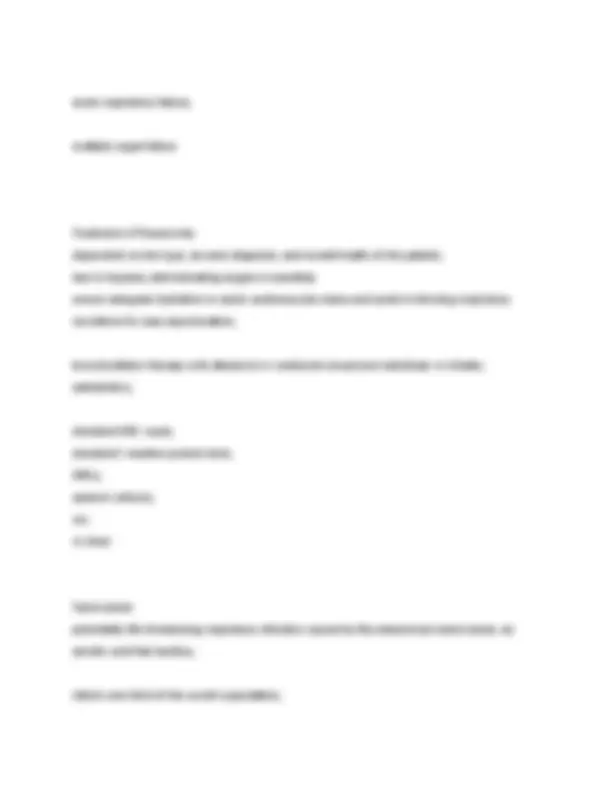
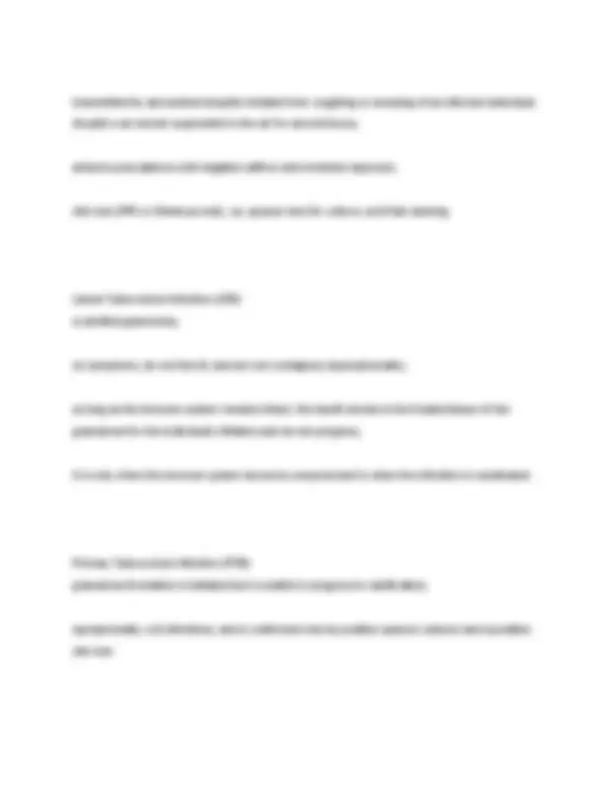
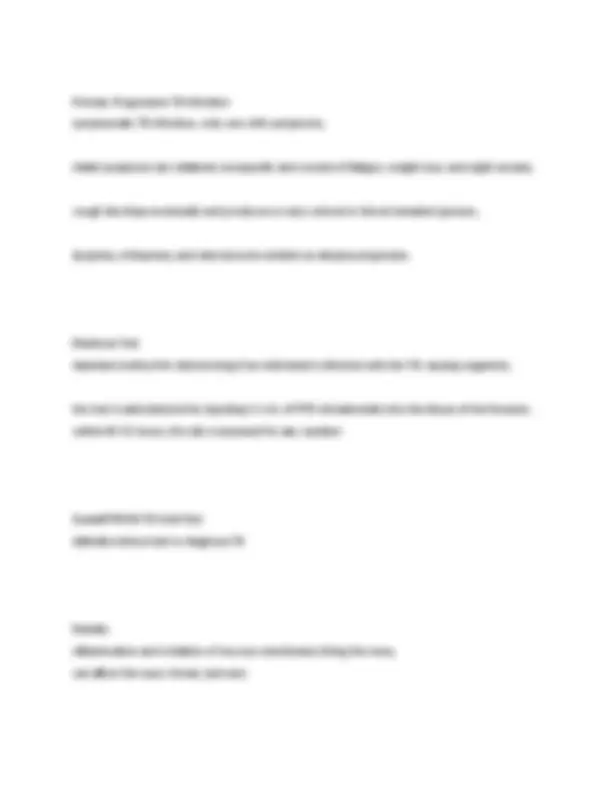
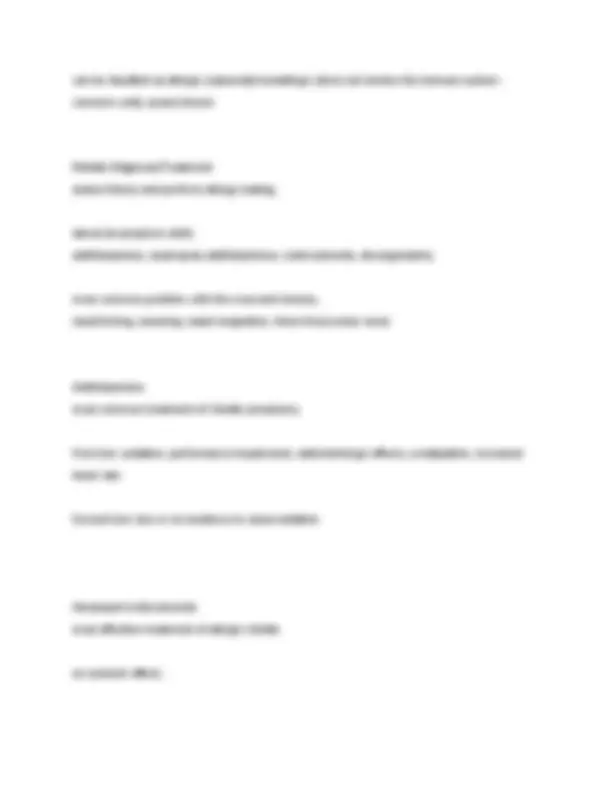
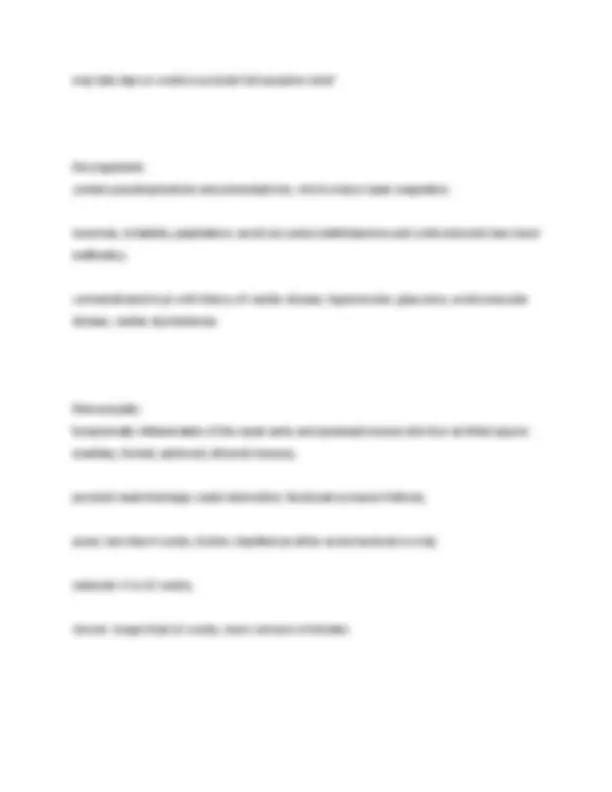
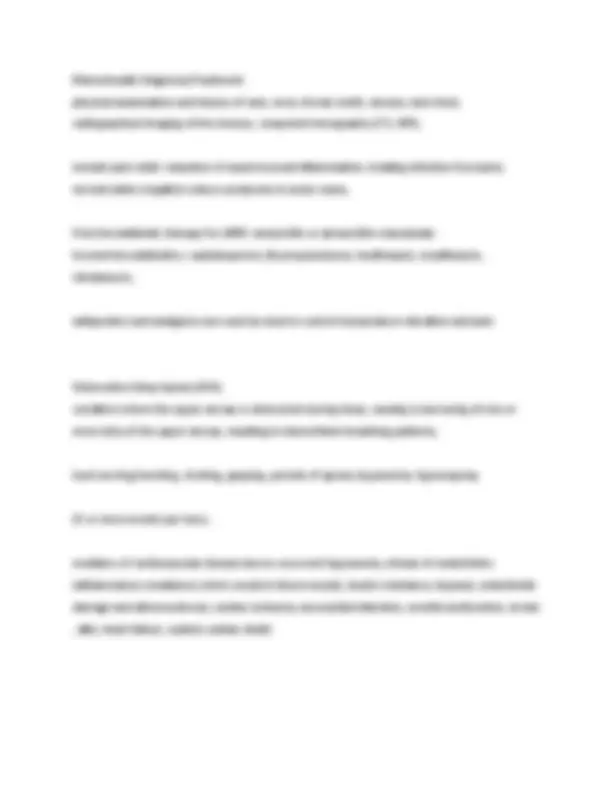
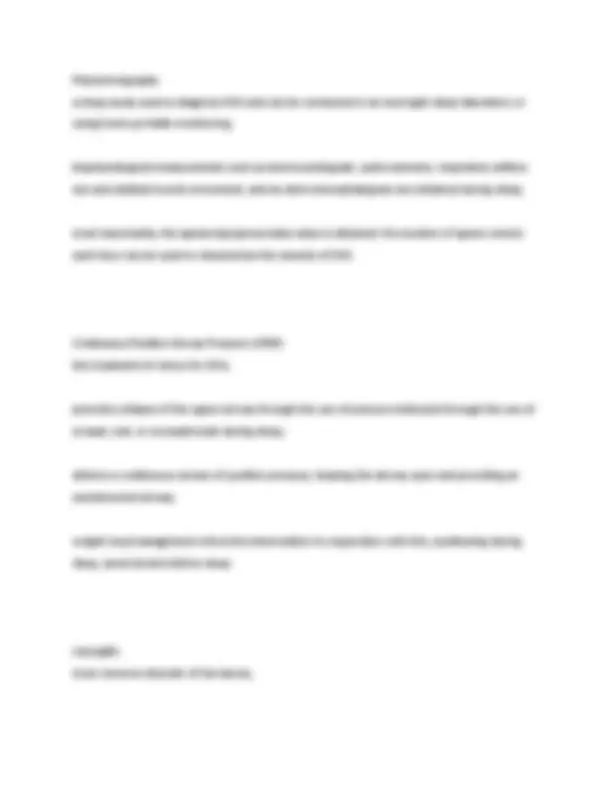
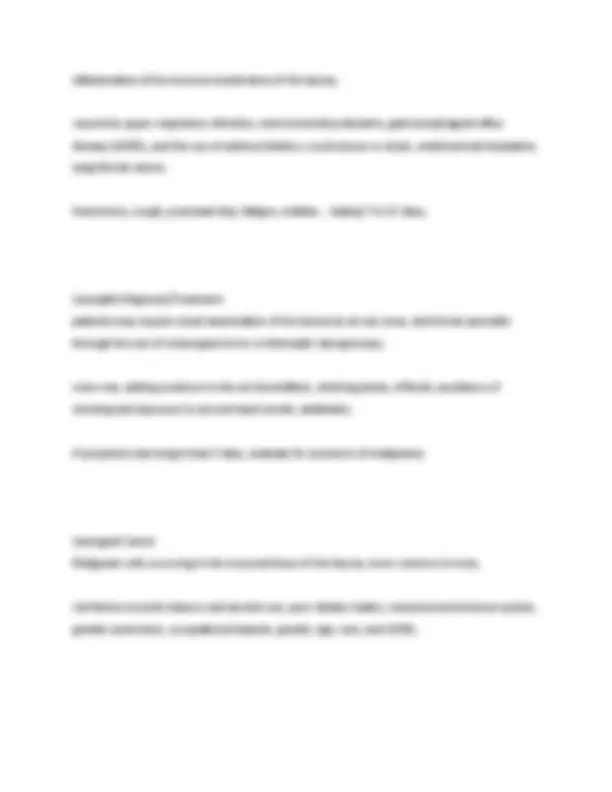
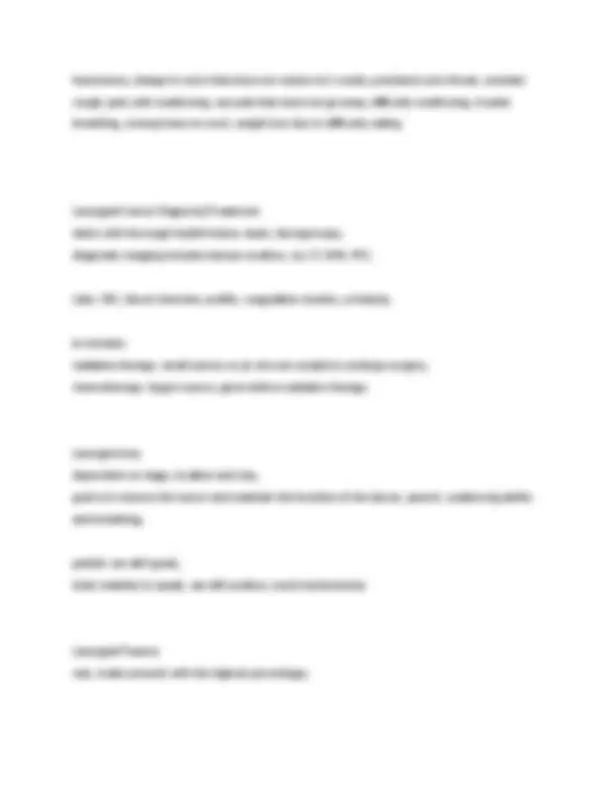
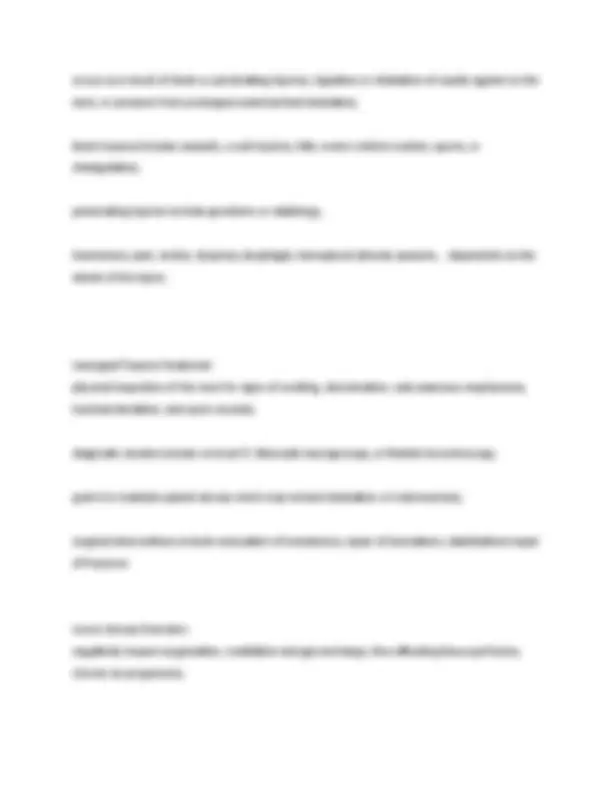
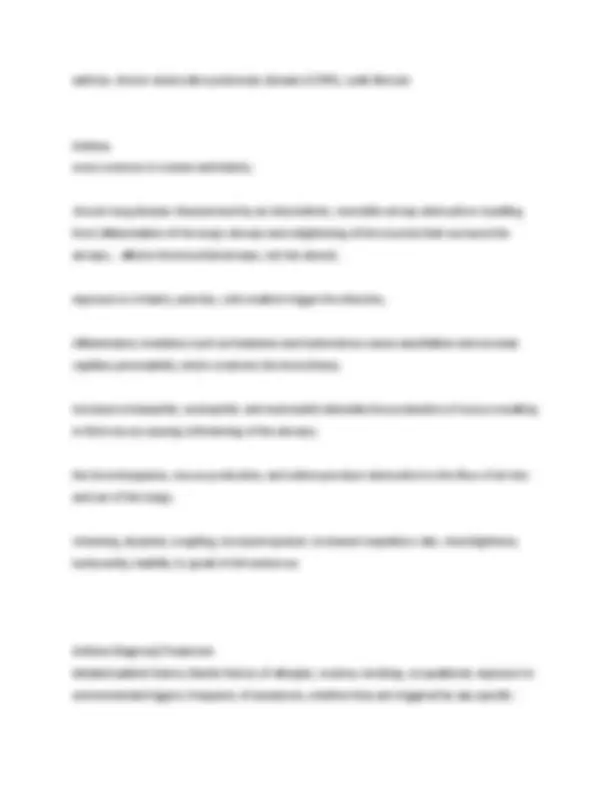
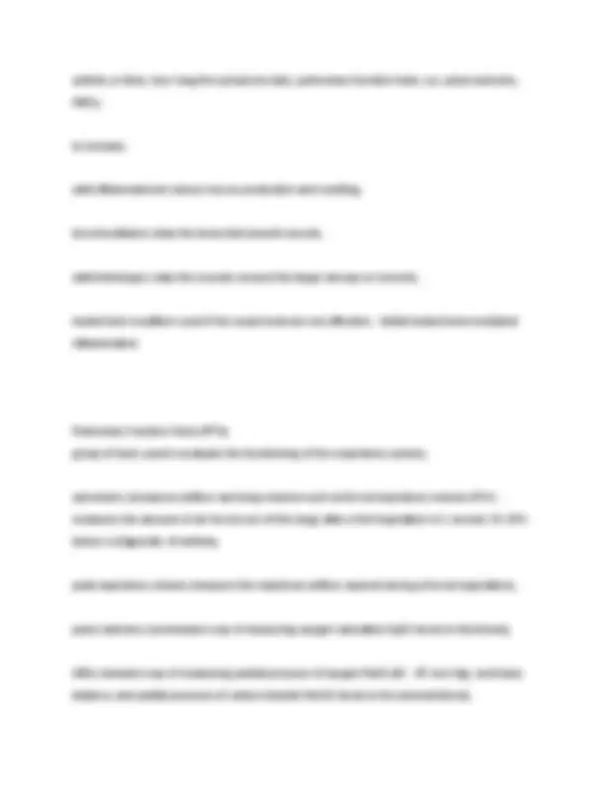
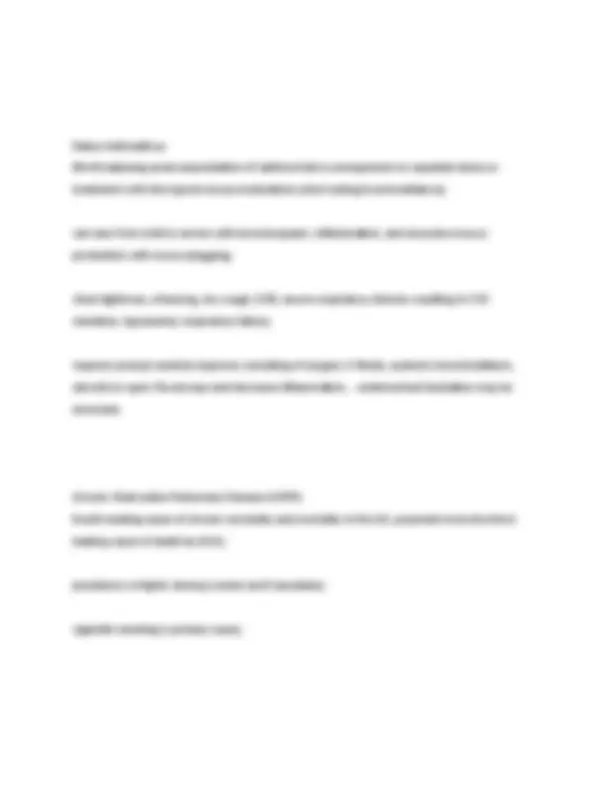
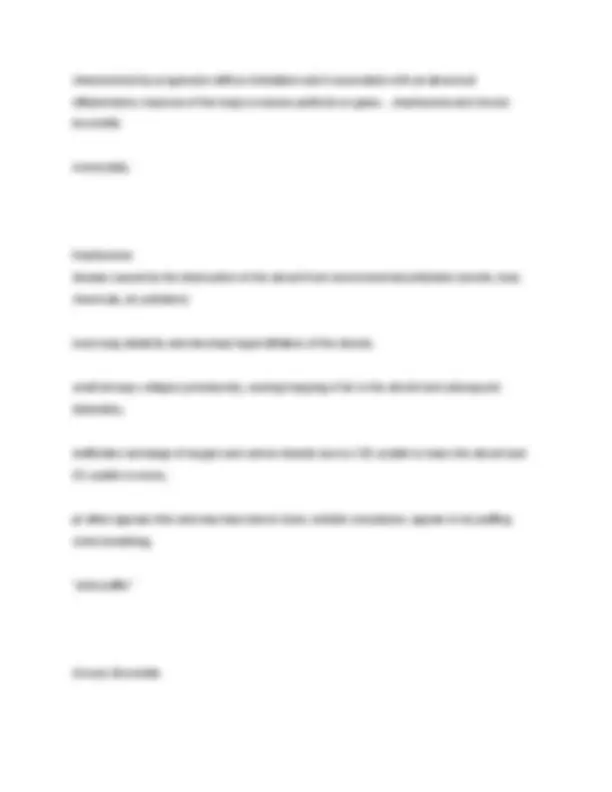
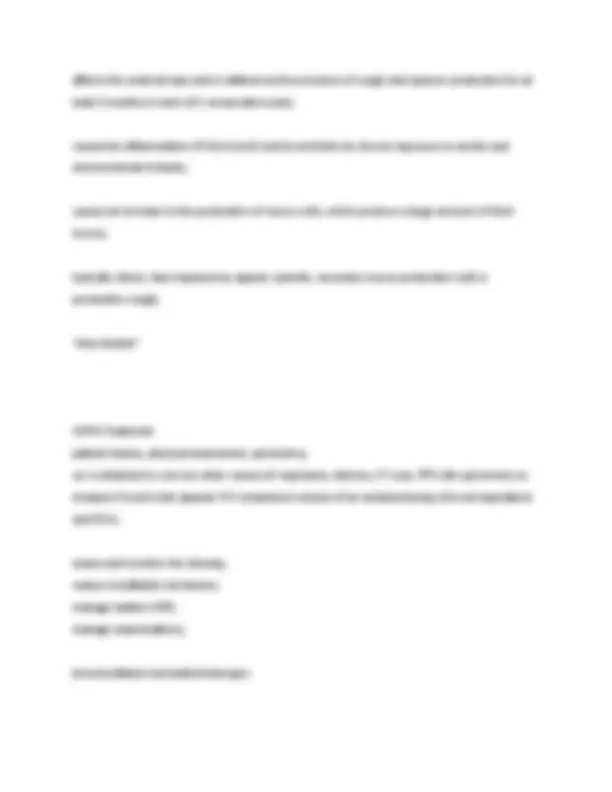
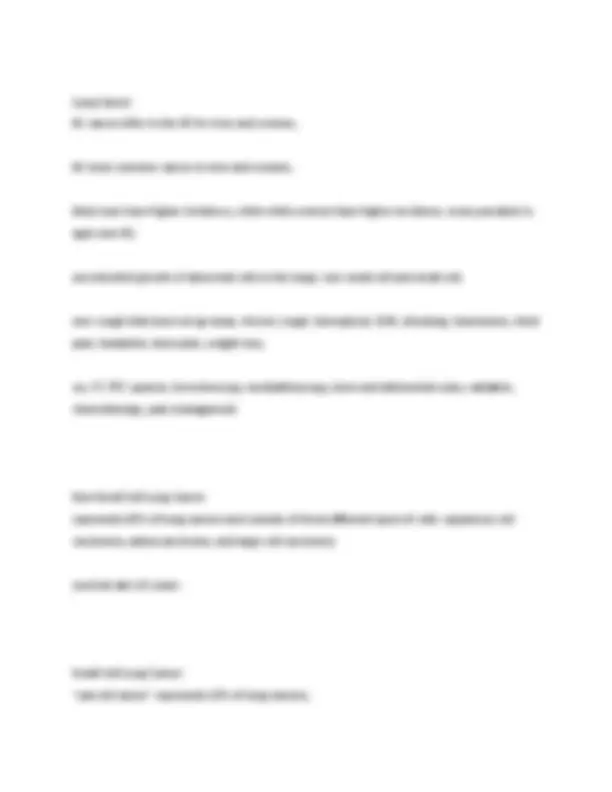
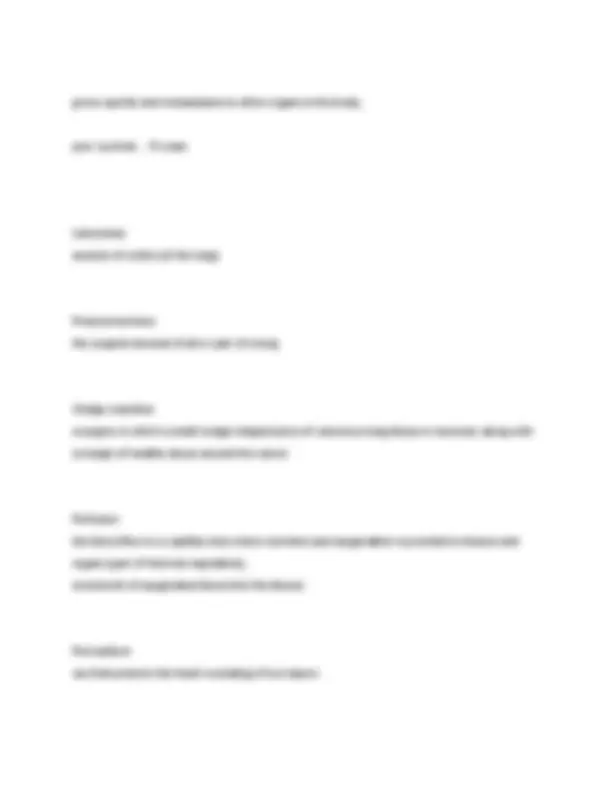
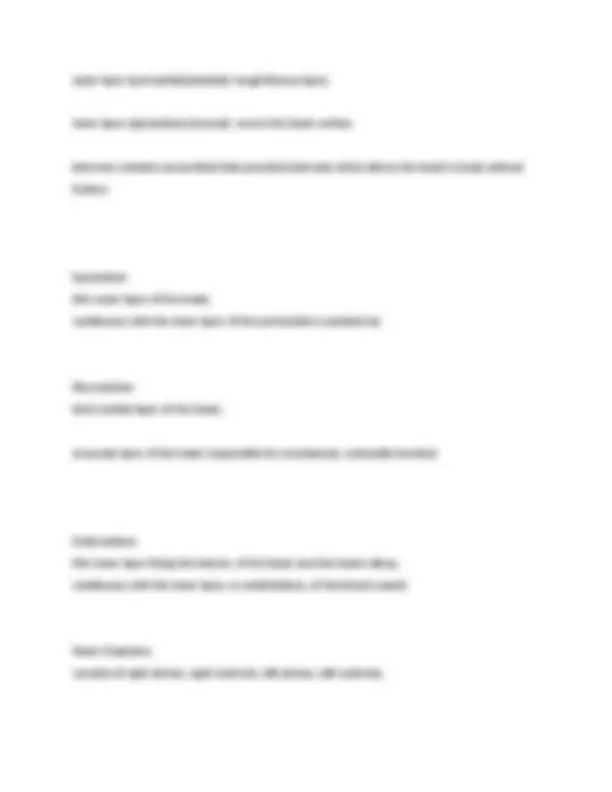
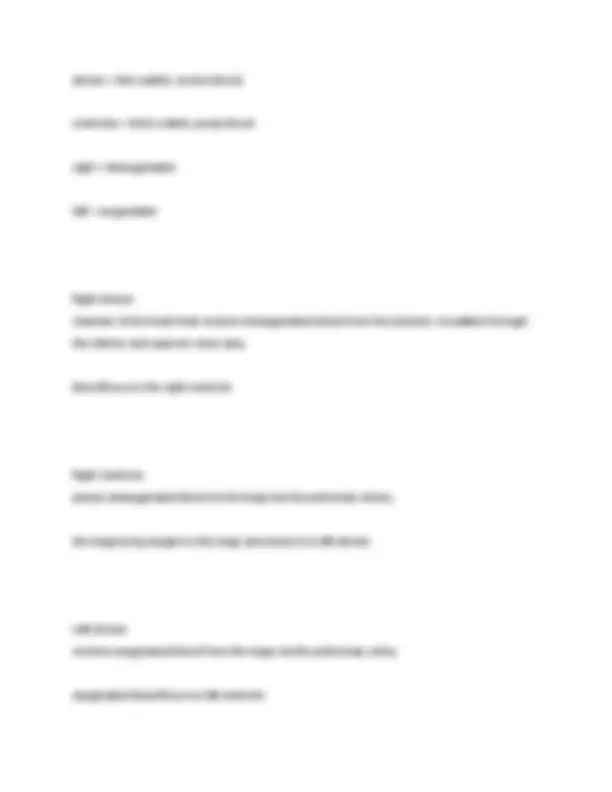
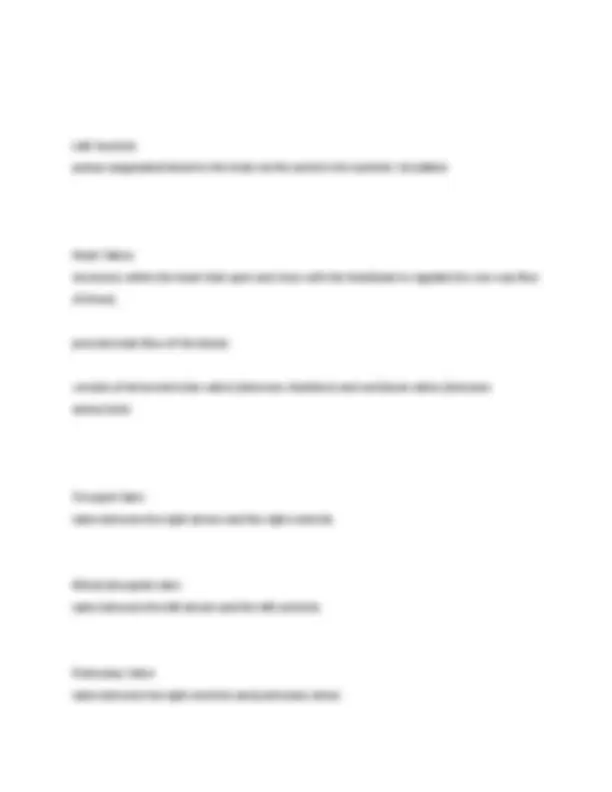
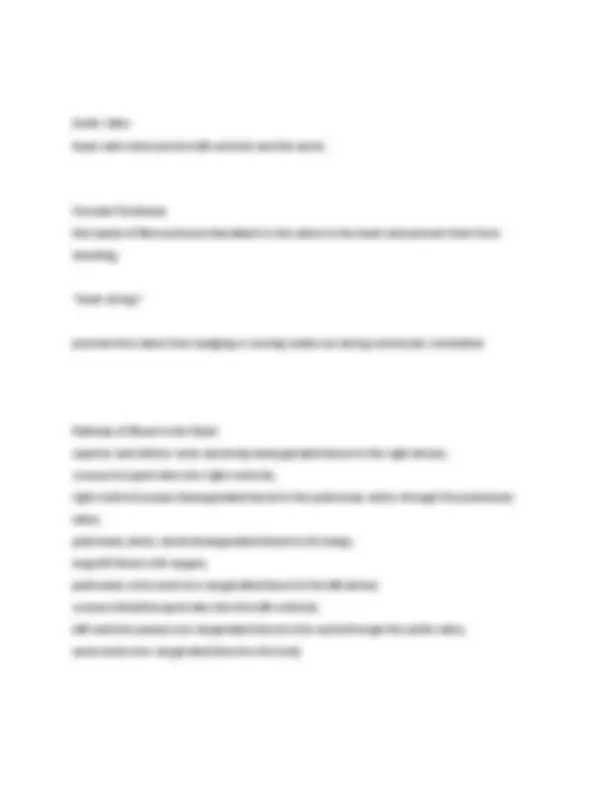
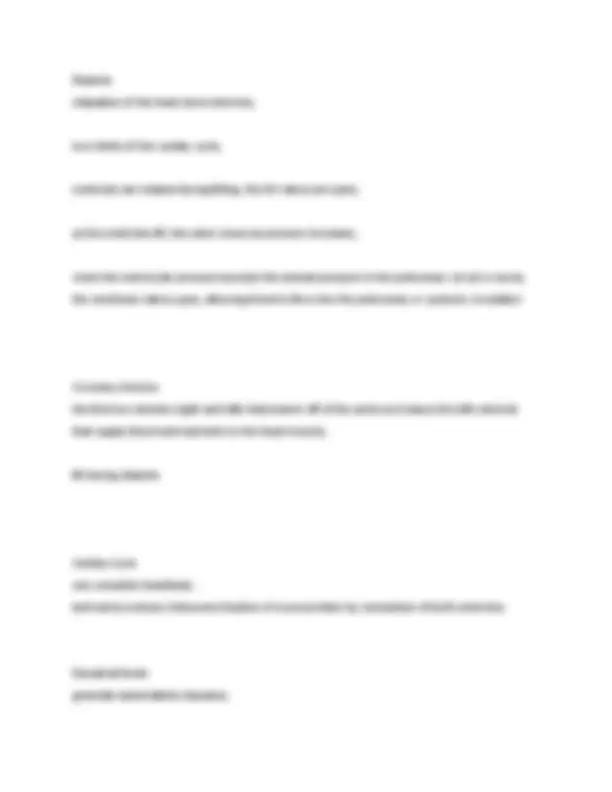
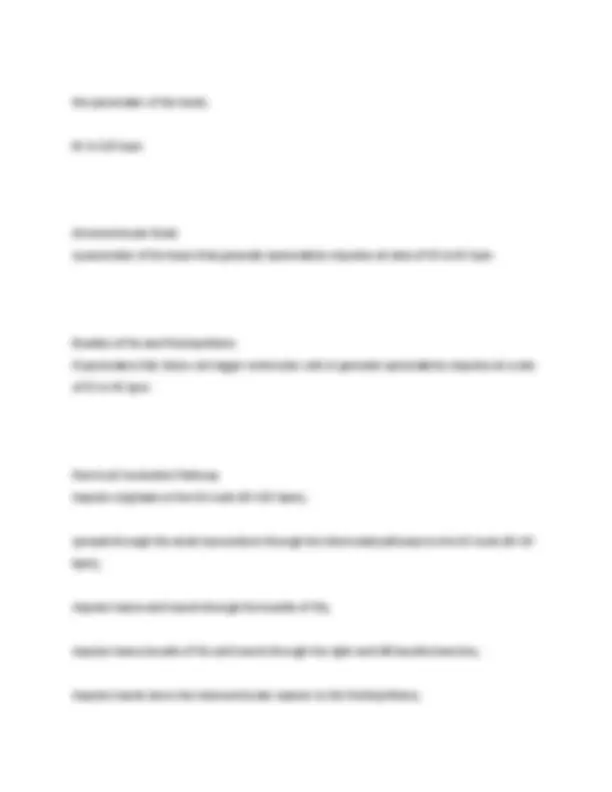
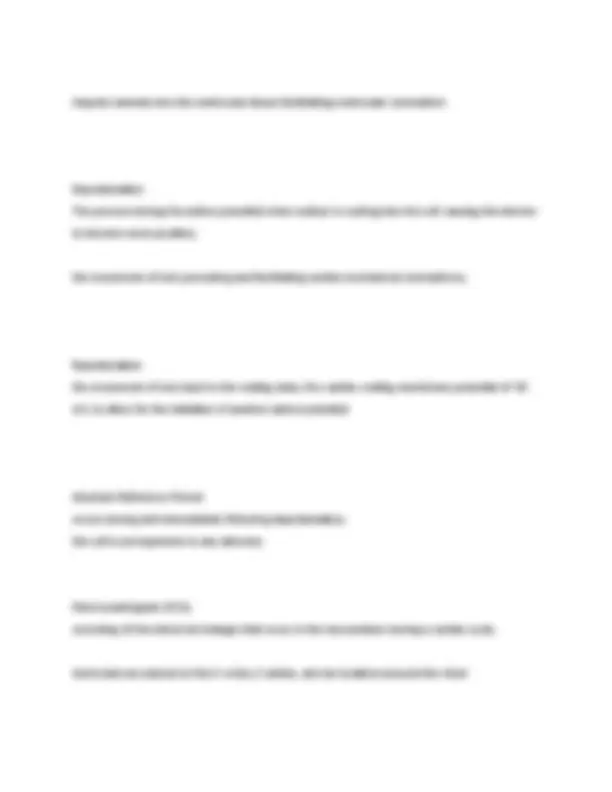
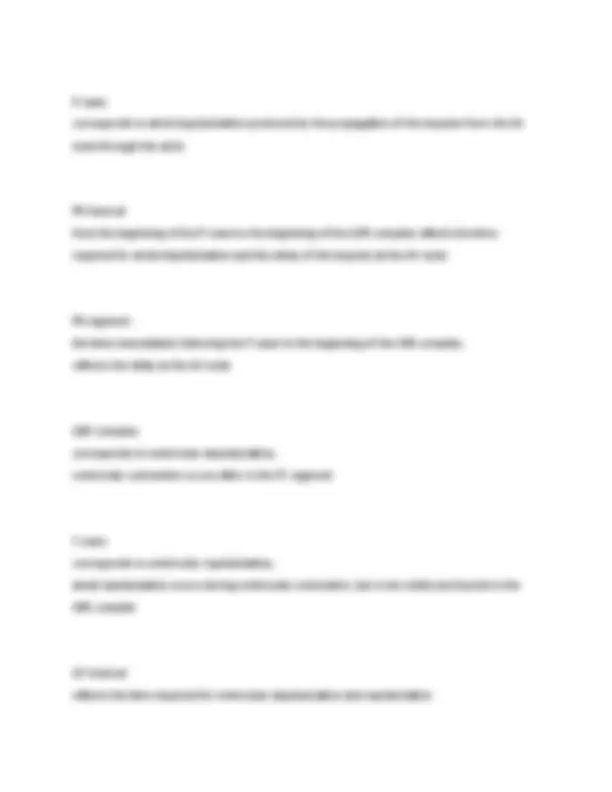
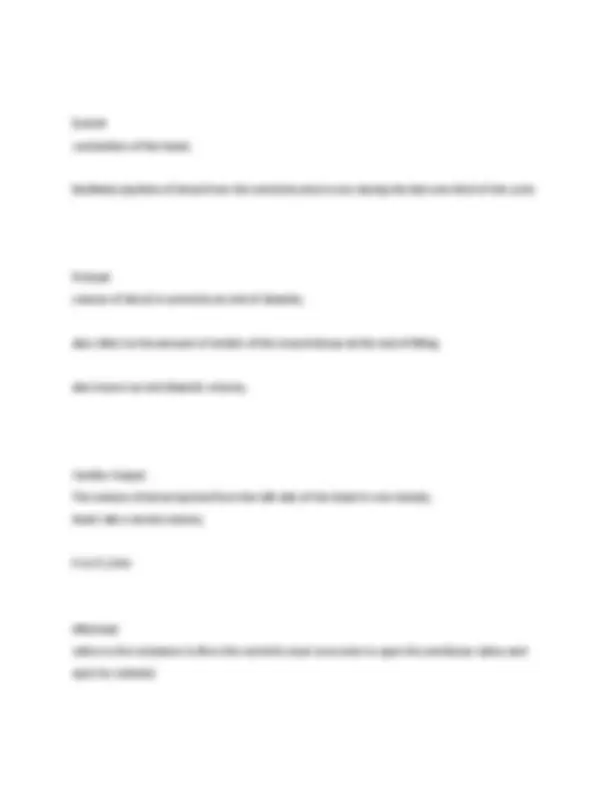
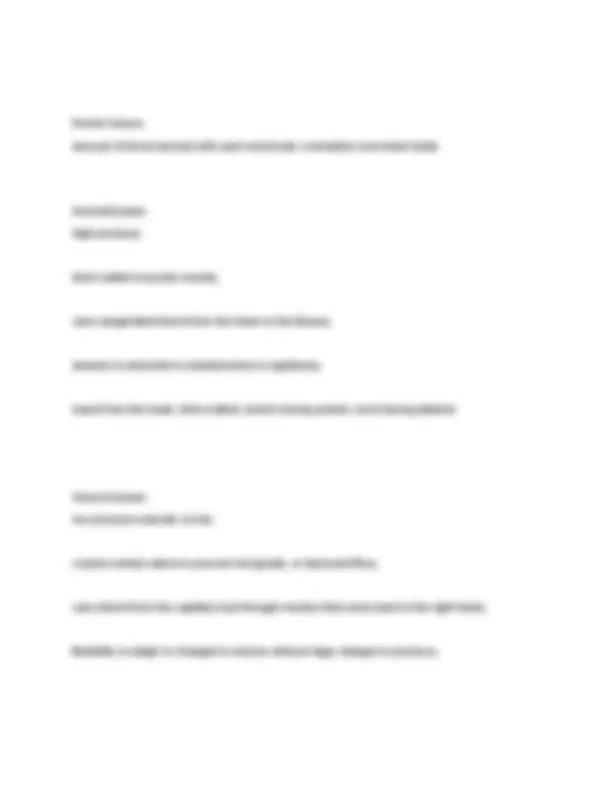
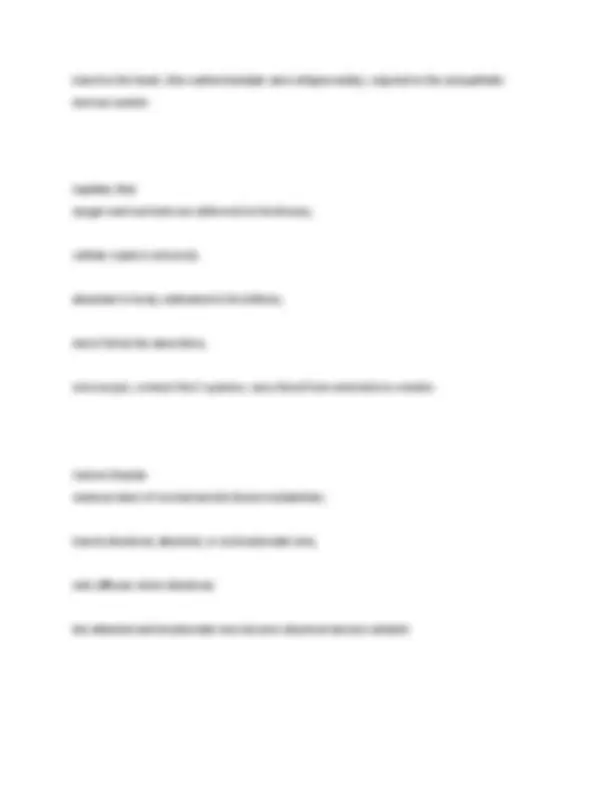
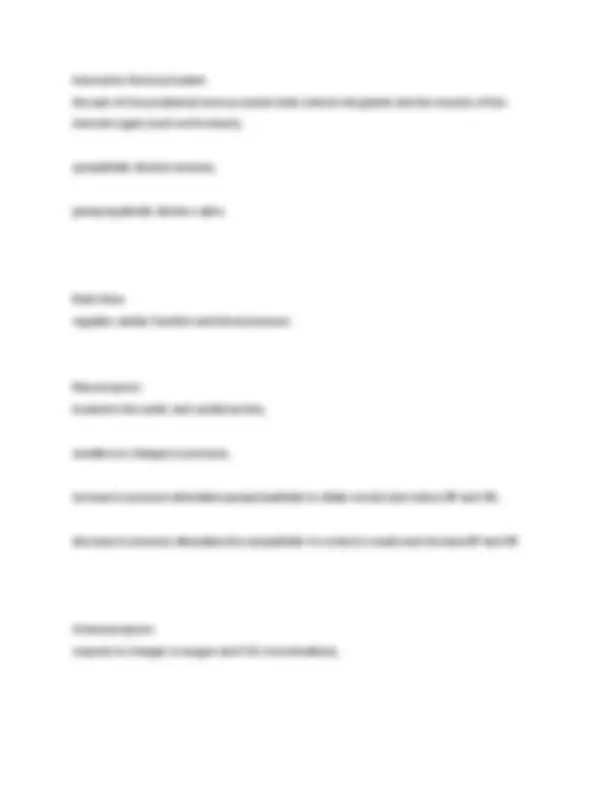
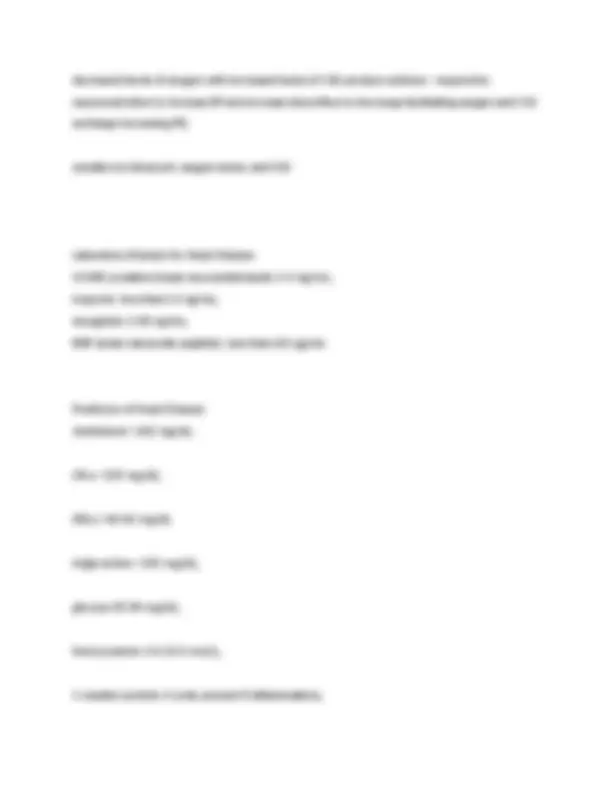
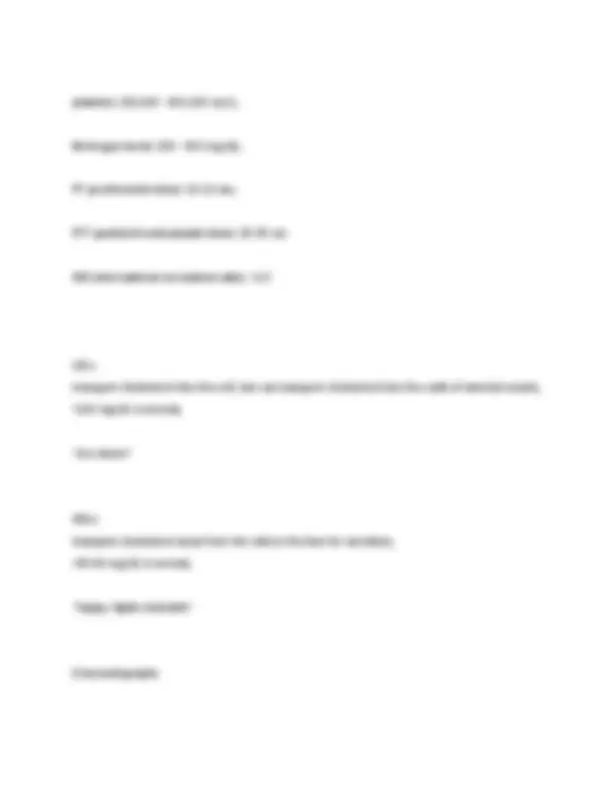
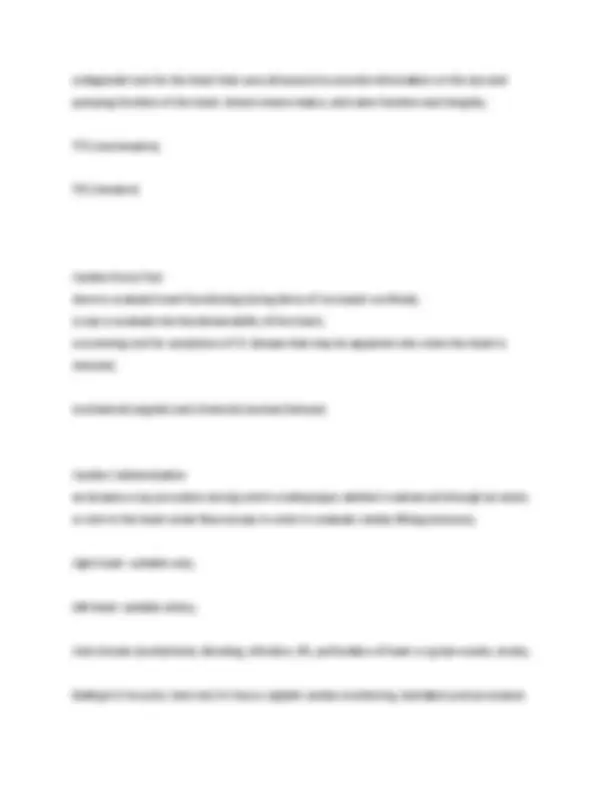
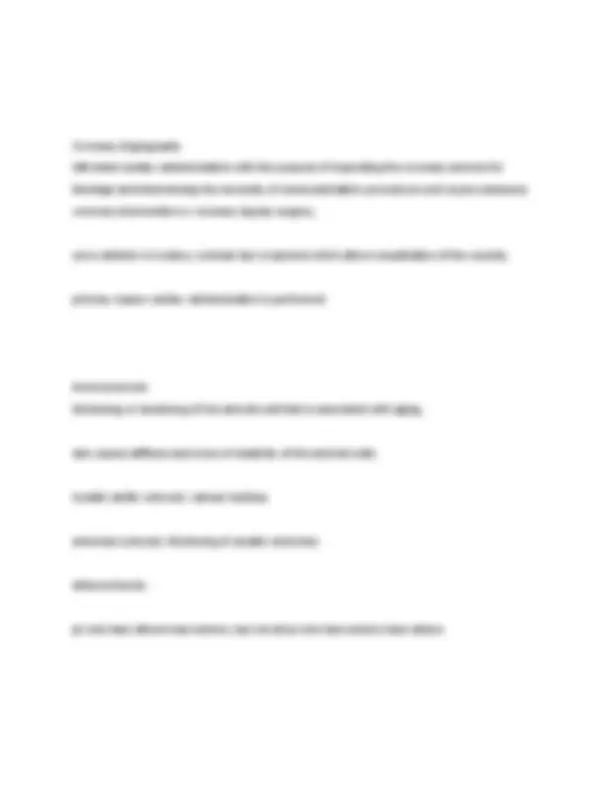
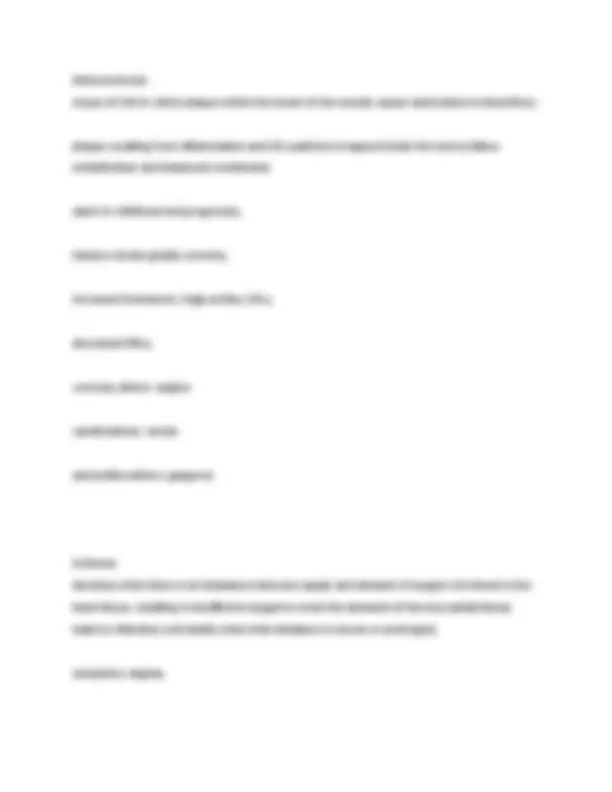
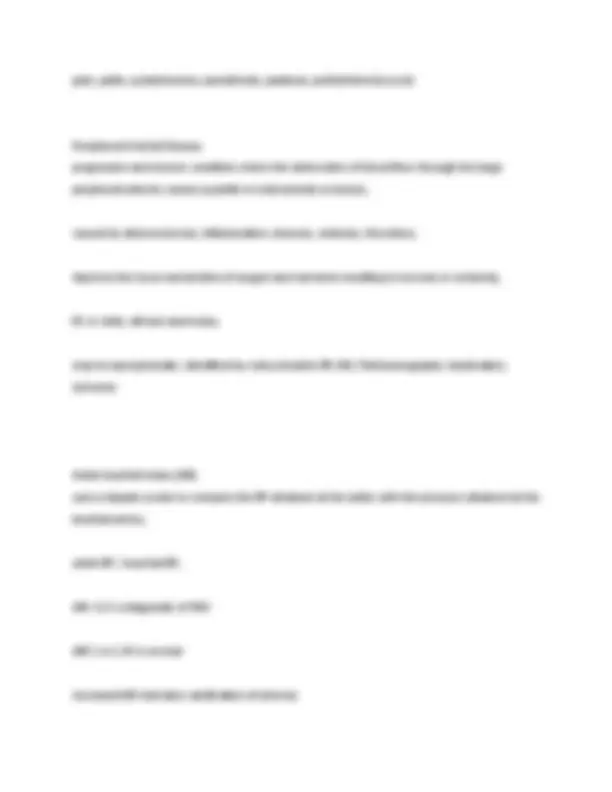
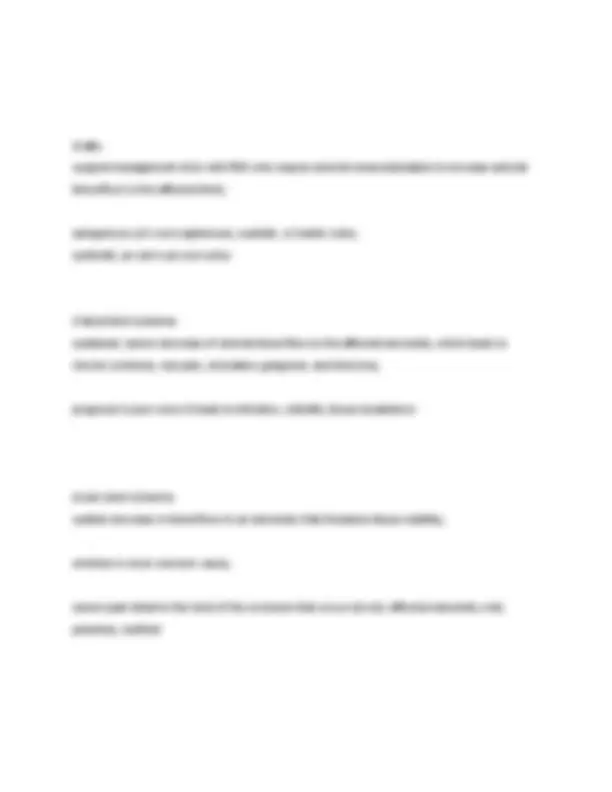
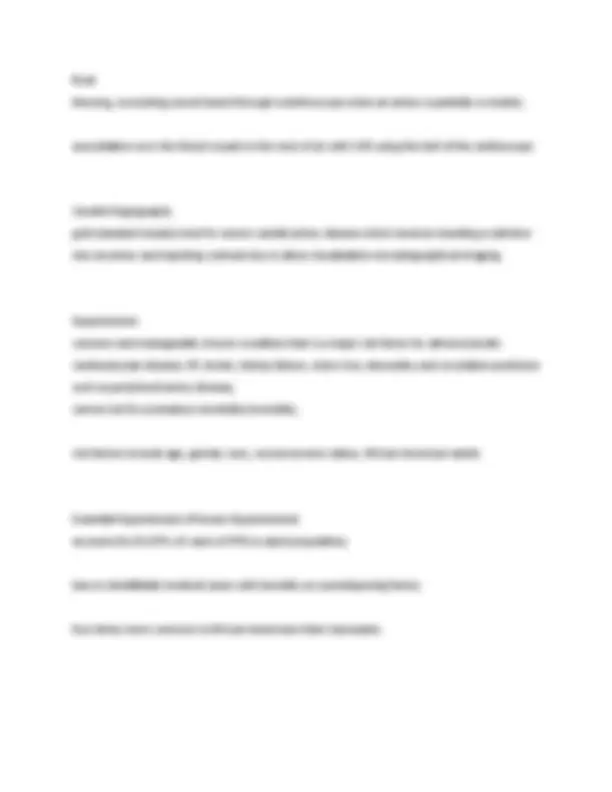
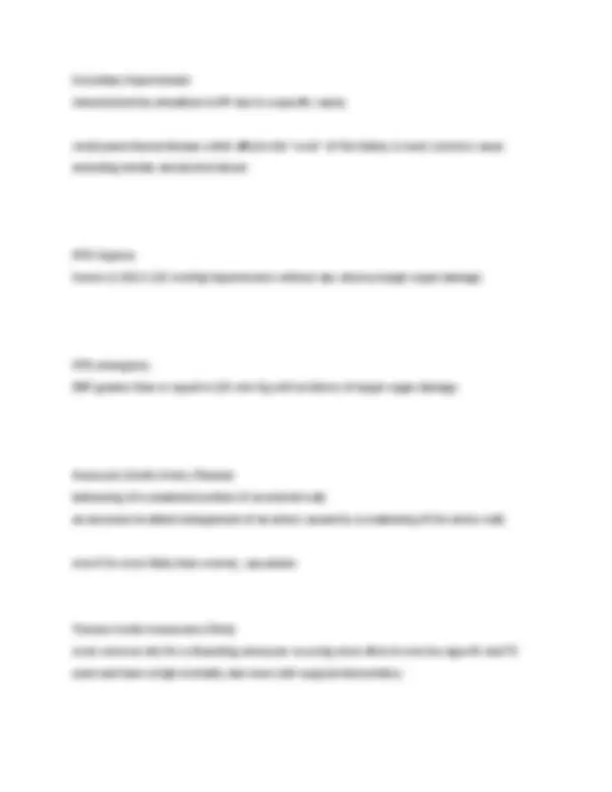
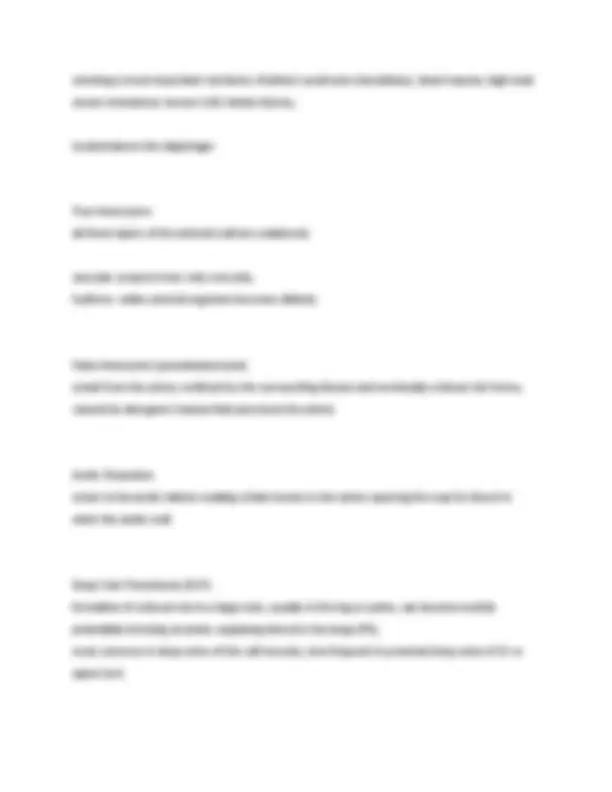
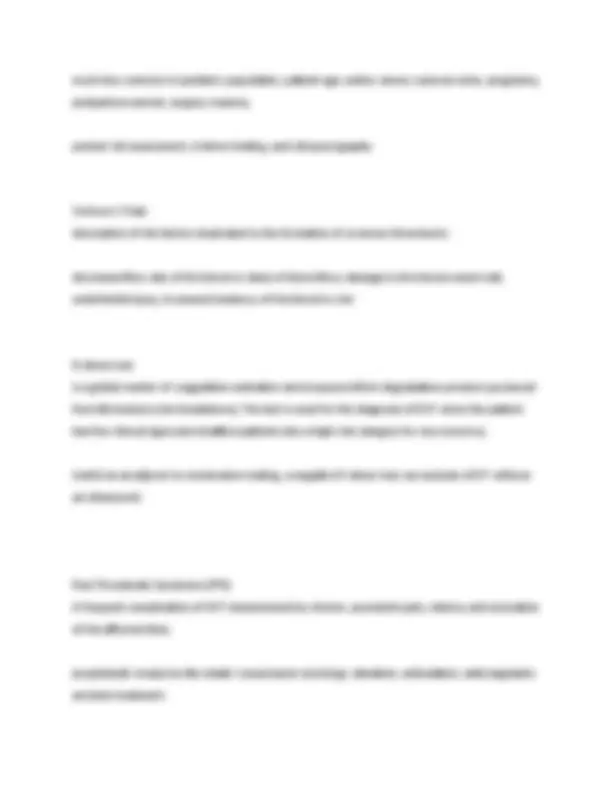
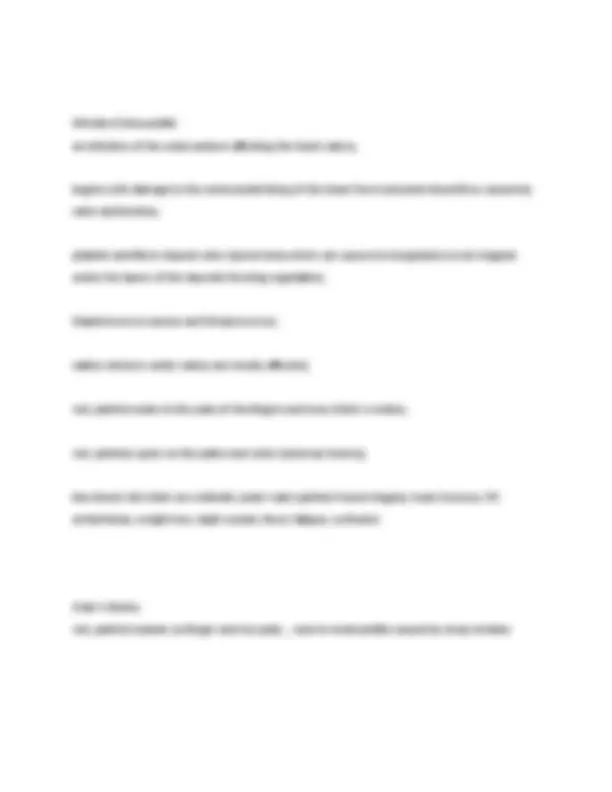
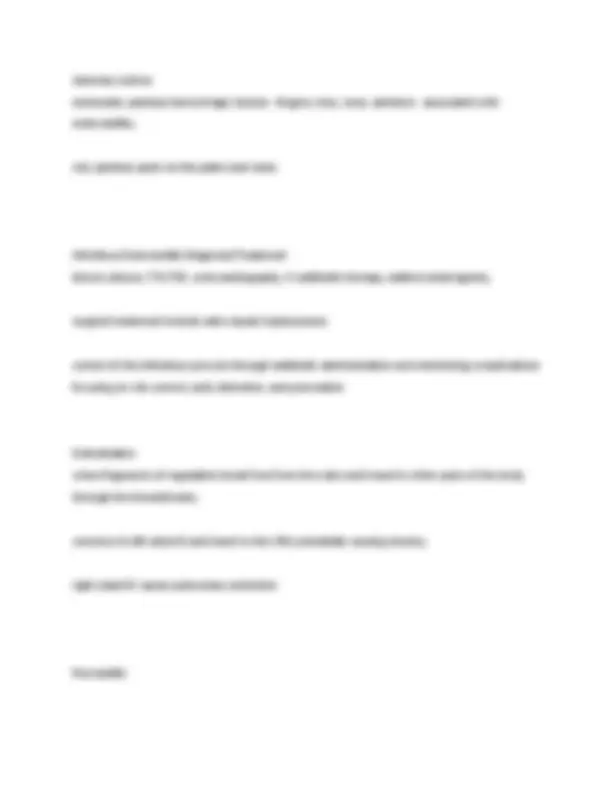
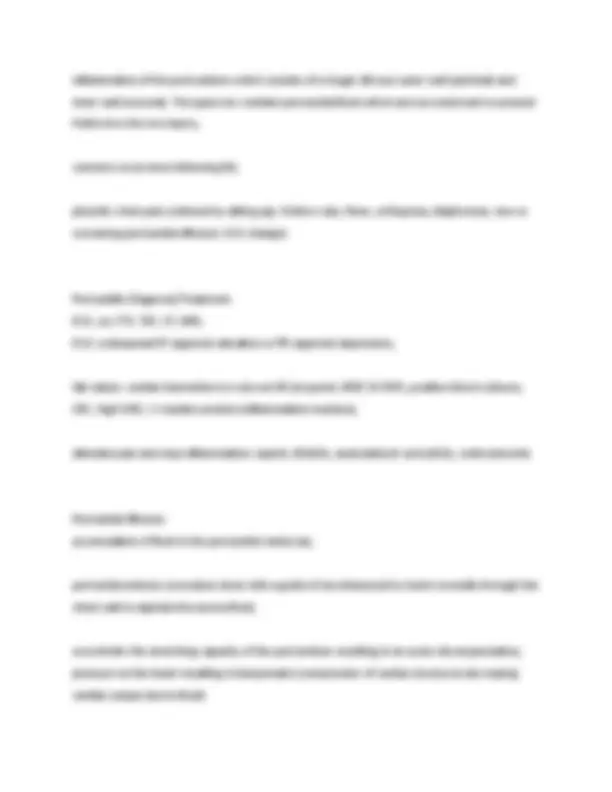
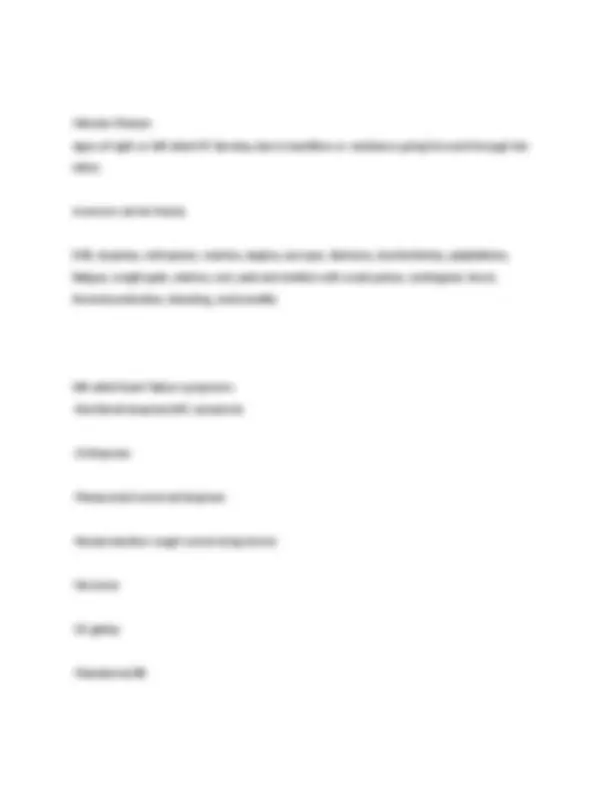
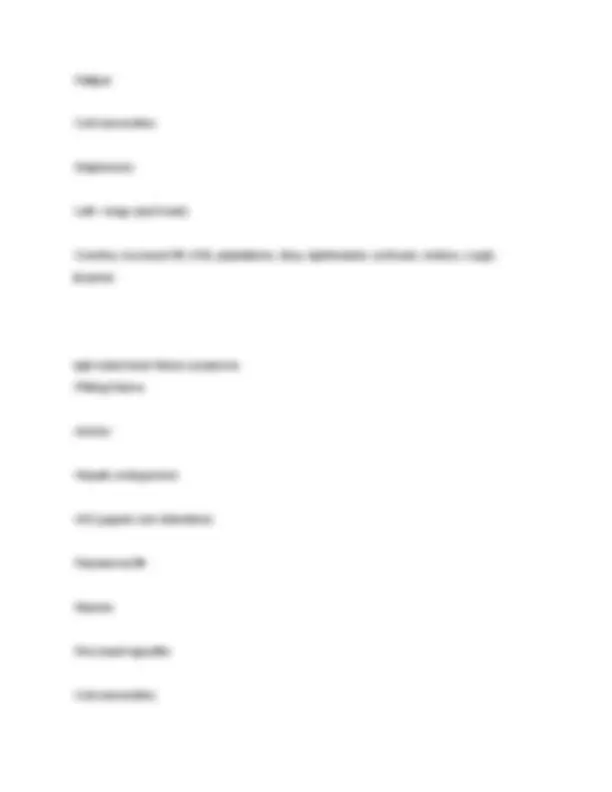
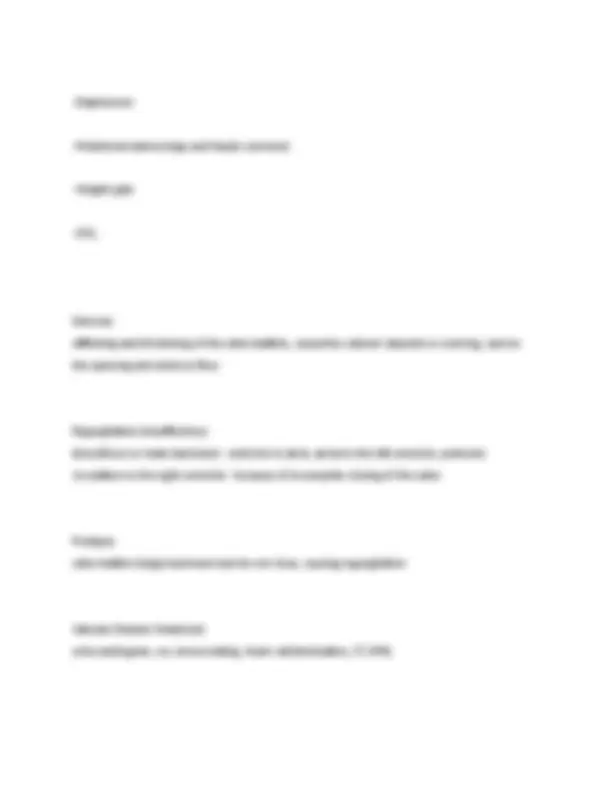
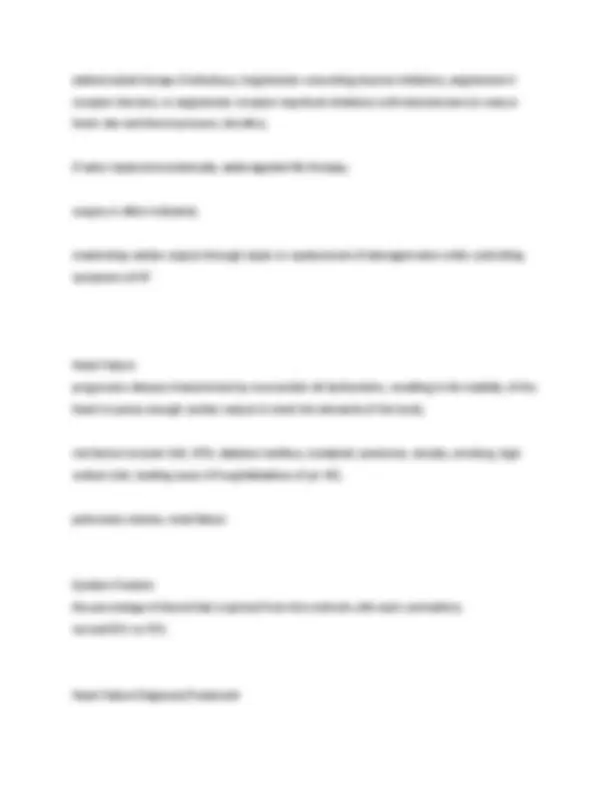
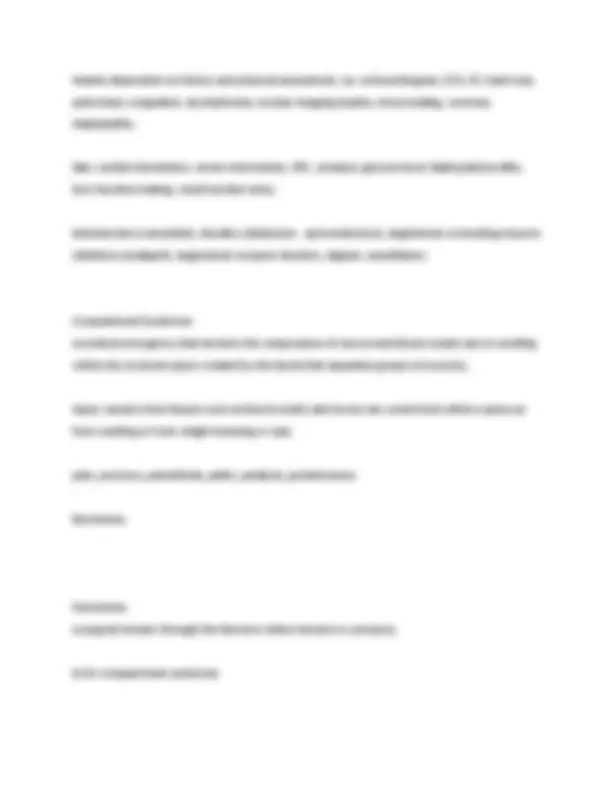
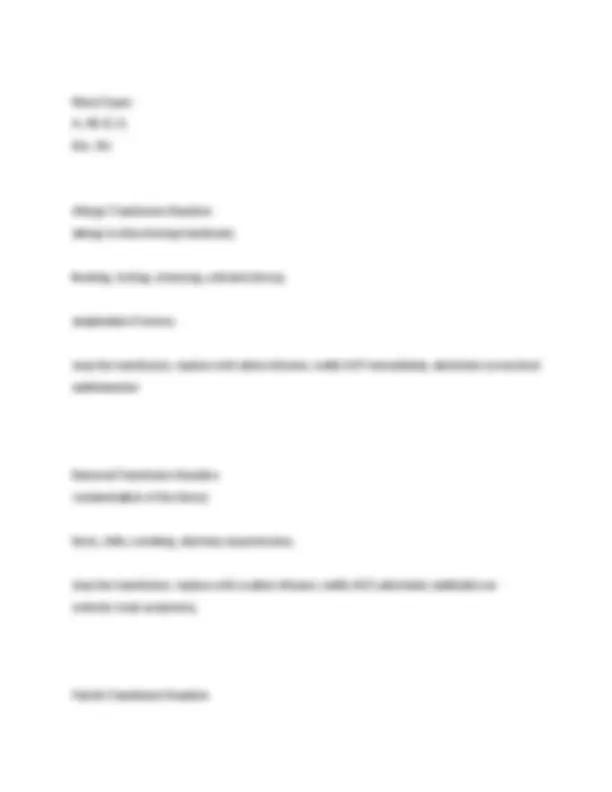
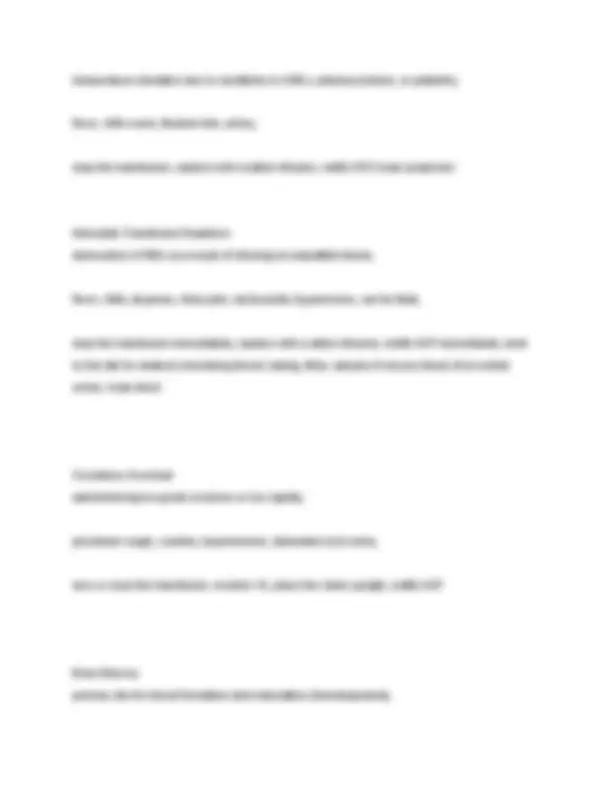
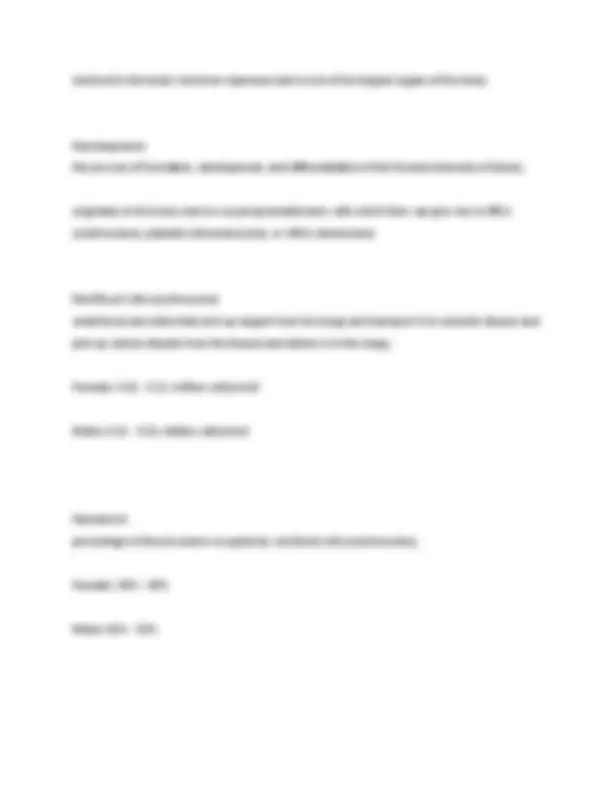
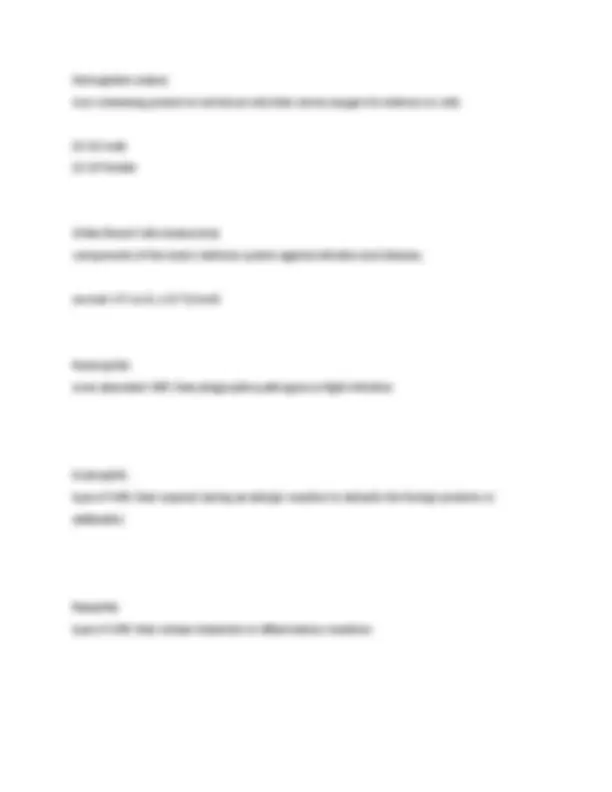
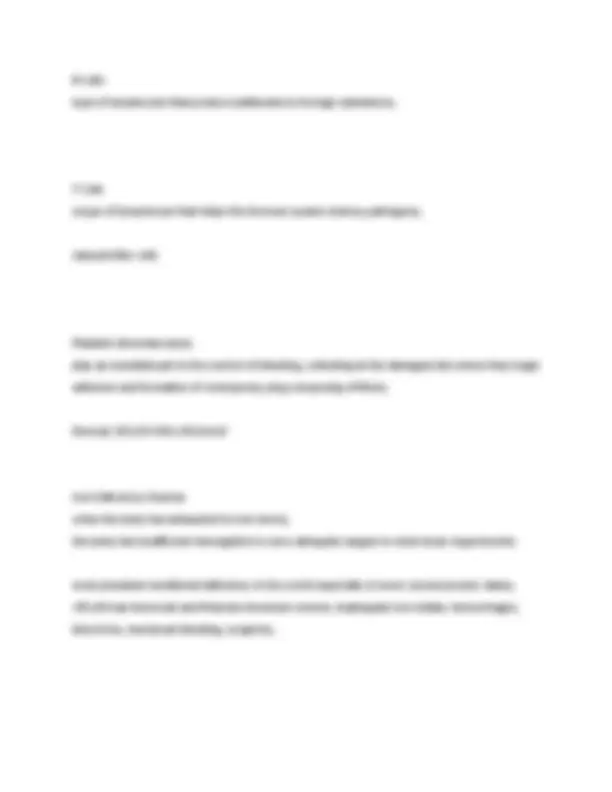
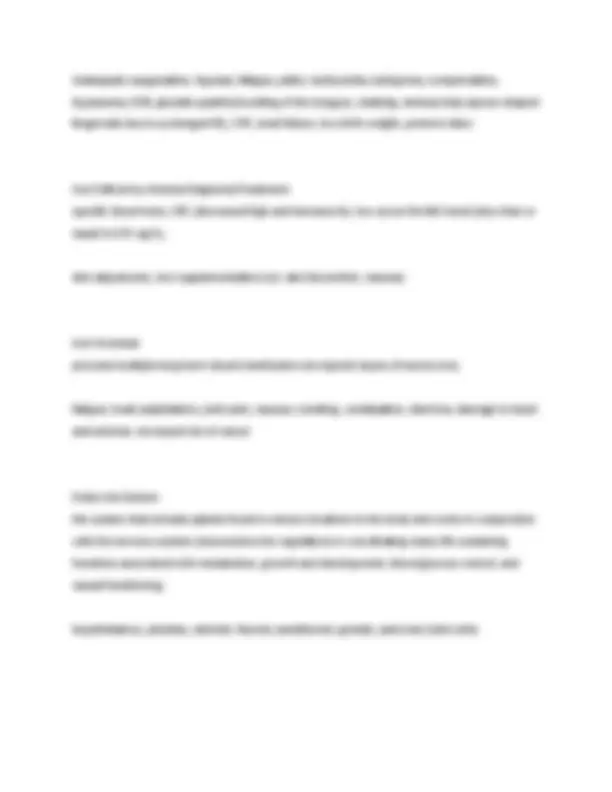
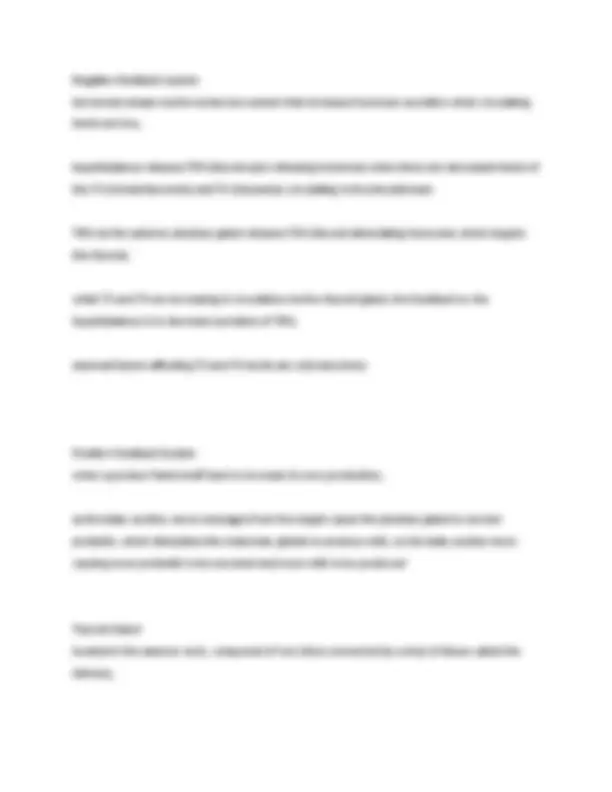
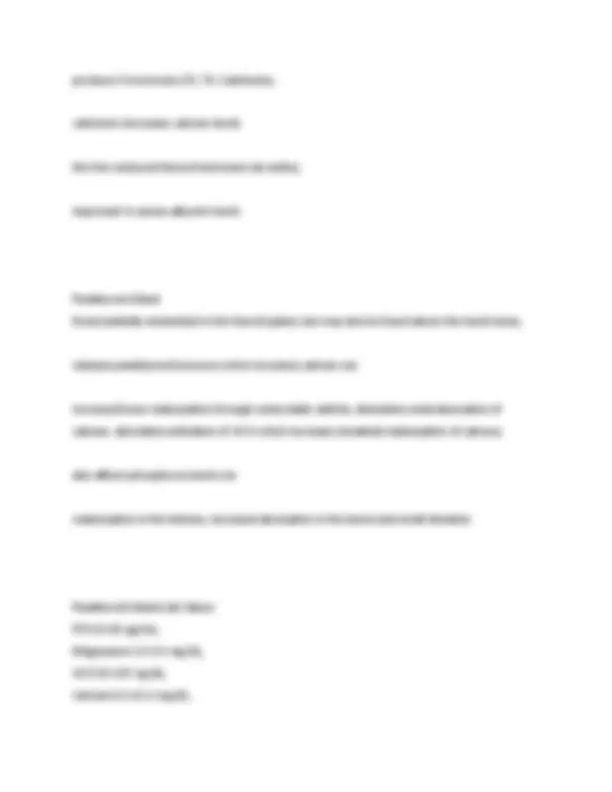
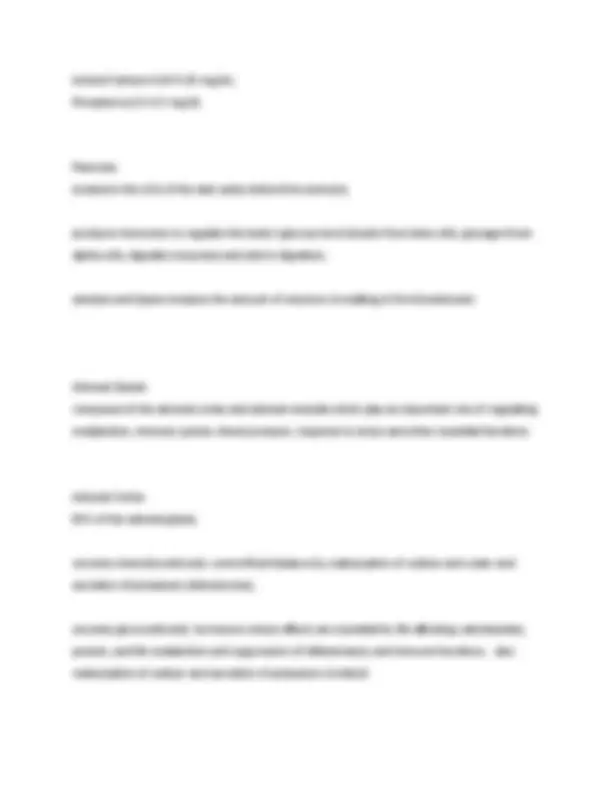
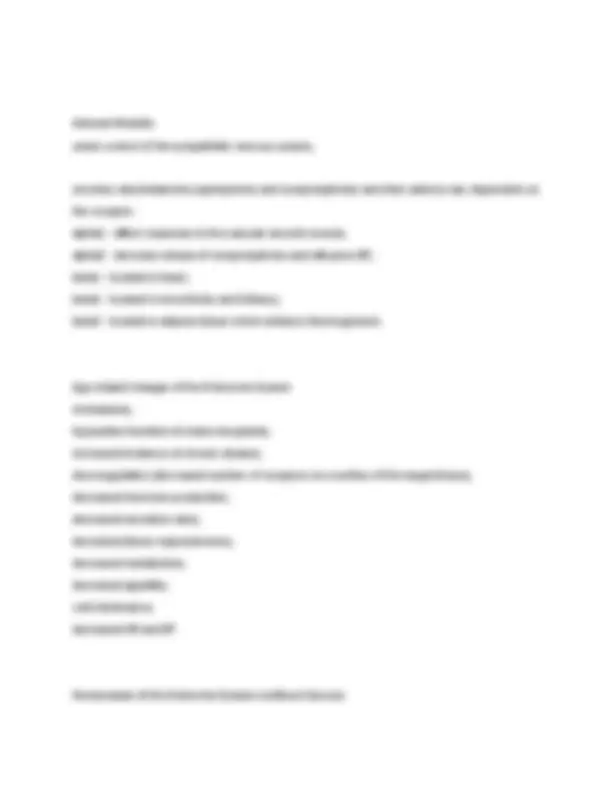
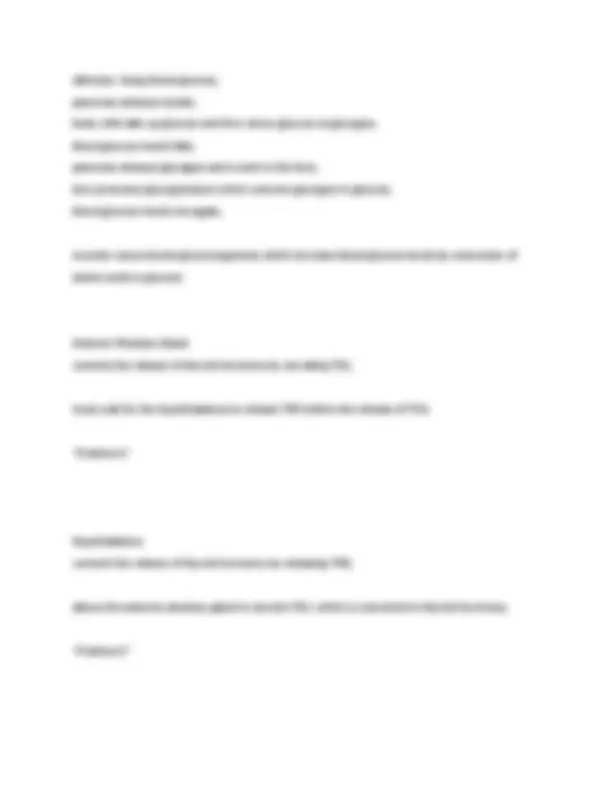
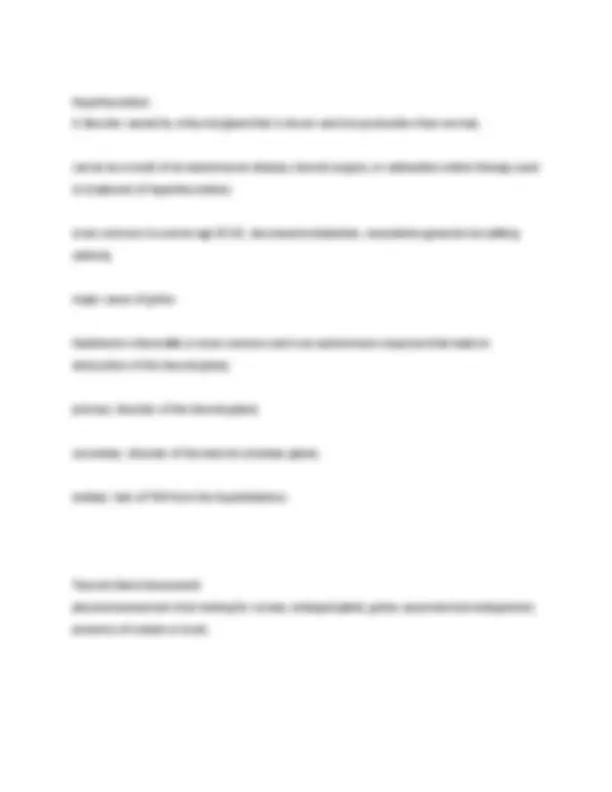
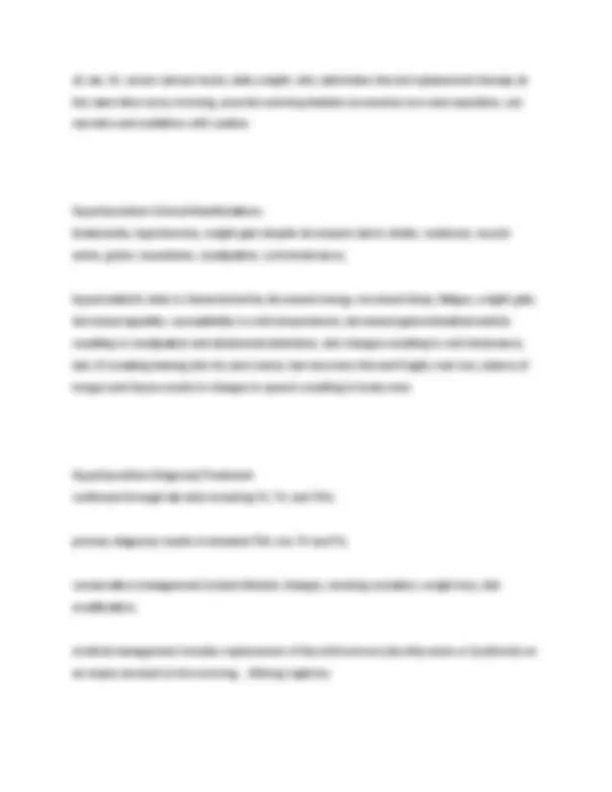


Study with the several resources on Docsity

Earn points by helping other students or get them with a premium plan


Prepare for your exams
Study with the several resources on Docsity

Earn points to download
Earn points by helping other students or get them with a premium plan
Community
Ask the community for help and clear up your study doubts
Discover the best universities in your country according to Docsity users
Free resources
Download our free guides on studying techniques, anxiety management strategies, and thesis advice from Docsity tutors
NUR 172 FINAL EXAM 2025 ACTUAL SUMMER-FALL EXAM GRADED A (ANSWERED) ALL TERMS 300 QUESTIONS Anxiety Disorder panic without reason; primitive survival skills take over, defense responses rescue, cognitive skills decrease significantly, trouble thinking and reasoning, restless, irritable, angry, VS increase due to surge in adrenaline, muscles tighten not situational or limited to certain events Panic Disorder 15-30 minutes of rapid, intense, escalating anxiety in which person experiences great emotional fear, as well as physiologic discomfort
Typology: Exams
1 / 151

This page cannot be seen from the preview
Don't miss anything!





























































































Anxiety Disorder panic without reason; primitive survival skills take over, defense responses rescue, cognitive skills decrease significantly, trouble thinking and reasoning, restless, irritable, angry, VS increase due to surge in adrenaline, muscles tighten not situational or limited to certain events Panic Disorder 15 - 30 minutes of rapid, intense, escalating anxiety in which person experiences great emotional fear, as well as physiologic discomfort diagnosed when person has recurrent, unexpected panic attacks followed by at least 1 month of persistent concern or worry about future attacks Pathological Anxiety no obvious threats exists or threat has passed but anxiety continues; likely to be an internal conflict (repression);
out of proportion to the situation; prevents fulfillment of roles; interferes with daily/social activities; affects overall quality of life; defense mechanisms overused GABA An inhibitory neurotransmitter in the brain that results in anxiety/panic when there is an imbalance Anxiety Symptoms unable to relax, easily startled, difficulty concentrating, fatigue, worry, trembling, irritability, may feel he or she is dying, sweating, nausea, lightheadedness, shortness of breath, tachycardia, restlessness, angina Anxiety Interventions/Treatment therapeutic communication; talk in a calm reassuring voice, provide privacy; safety; focus on deep breathing;
flashbacks, nightmares, avoidance of reminders of the trauma, severe anxiety attacks, anhedonia (lack of pleasure in life), irritability, hypervigilance, depressed mood, outbursts of anger, startled reactions, sleep disturbances, guilt, other somatic symptoms (fatigue, chest pain, GI symptoms); problems with concentration, dissociation, memory gaps PTSD Interventions/Treatment promote patient safety; help the pt cope with stress and emotions (validate, supportive touch, relaxation techniques, distraction techniques); help promote self-esteem (refer to them as "survivor"); establish social support; actively listen to pt's stories of experiences, assess suicide risk; assist the pt to develop objectivity about the event, encourage group therapy Personality the totality of emotional and behavioral characteristics that are particular to a specific person and that remain somewhat stable and predictable over time; can be ingrained, enduring pattern of behaving and relating to the self, others, and the environment... including perceptions, attitudes, and emotions Personality Disorder
psychological disorders characterized by inflexible and enduring behavior patterns that impair social functioning; make it difficult for a person to succeed in interpersonal relationships, begins in childhood/adolescence; risk factors include head injuries in childhood, development of the hypothalamus of the brain, under-developed super ego Antisocial Personality Disorder persistent pattern of disregard and defiance on the rights of others; deceit and manipulation are central features, lack of empathy, disregard feelings, rights, suffering of others; history of pathological lying; inflated sense of self that appears confident, as they tend to be opinionated, coarse, and verbose; failure to conform to rules in society so that often behaviors are direct violation of the law, deceitful, shallow emotions Temperament innate component of personality and refers to how someone sees the world;
Borderline Personality Disorder persistent pattern of mood instability, intense interpersonal relationships, impulsivity, identity disturbance, recurrent suicidal acts, and or self-mutilating behaviors, intense anger, and rage; intense/unstable relationships, impulsive, unpredictable, unstable self-image, manipulative, self-mutilation, polarized thinking, splitting; long-term pervasive disorder that does not "go away", crisis driven and pt need to learn to live and cope with the symptoms Borderline Personality Disorder Diagnoses complete history and physical examination with consideration of previous neurological trauma; limbic system - poorly controlled emotions; hypothalamus - impulse control; self-mutilating injuries Nursing Interventions/Treatments for Borderline Personality Disorder promoting patient safety (no self-harm contract - an informal agreement where safety is prioritized); helping the pt to cope and control emotions (delaying gratification, identify feelings);
cognitive restructuring techniques (decatastrophizing, thought stopping); structuring time (written schedule of activities); teaching effective communication skills (eye contact, active listening, taking turns talking, "I" statements) Dopamine 66% increase of this neurotransmitter's receptors has been shown in Post-Mortem studies in a person with schizophrenia acute dystonia acute sustained contraction of muscles, usually of the head and neck Tardive Dyskinesia involuntary movements of the facial muscles, tongue, and limbs; a possible neurotoxic side effect of long-term use of antipsychotic drugs that target certain dopamine receptors Neuroleptic Malignant Syndrome Life-threatening muscle rigidity, fever, and rhabdomyolysis;
control the "positive" symptoms of Schizophrenia, such as hallucinations, delusions and confusion; Restraints physical, chemical, mechanical control of a client to prevent injury to self or others; 4 - 6 trained staff are needed for an aggressive patient; be aware of family concerns involving loved ones being placed in this... they may feel fear, embarrassment, isolated Seclusion process of placing a client alone in a specially designed room for protection and close observation Acting Out an immature defense mechanism in which the person deals with emotional conflict or stress by actions rather than reflection or feelings; the person is trying to feel less powerless or helpless Schizophrenia Diagnosis physical and mental status examination;
hepatic functioning - antipsychotic first bypass through the liver; metabolic panel; alcohol and drug screening; pregnancy test (teratogens); complete neurological examination (head trauma) Hostility verbal aggression; an emotion expressed through verbal abuse, lack of cooperation, violation of rules or norms or threatening behavior; intended to intimidate or cause emotional harm to another, and it can lead to physical aggression; talk therapy is most effective to prevent the behavior from escalating Impulse Control the ability to delay gratification and to think about one's behavior Positive Symptoms of Schizophrenia extreme or exaggerated behaviors including delusions, inappropriate or over-reactive affect, associative looseness, neologisms, concrete thinking, clang association, word salad, circumstantiality, tangentiality, thought blocking/broadcasting/withdrawal/insertion,
Mania an alteration in mood that may be expressed by feelings of elation, inflated self-esteem, grandiosity, hyperactivity, agitation, racing thoughts, and accelerated speech; levels of serotonin and norepinephrine are two major biogenic amines implicated; Serotonin affects mood activity, aggressiveness, irritability, cognition, pain, biorhythms, and neuroendocrine processes; excess is seen in mania; low levels may lead to increased aggressive behavior Lithium (mania) has been used to stabilize manic episodes in bipolar disorders. It moderates the levels of norepinephrine and glutamate neurotransmitters. Acute Mania Interventions decrease stimuli and one to one observation if necessary;
antipsychotics are often used; provide for physical safety and those around; use short, simple sentences to communicate; remind the patient to respect distances; provide finger foods that are high in calories to compensate for increased caloric requirements due to hyperactivity; promote rest and sleep; channel the patient's need for movement into socially acceptable motor activities; lithium therapy Mood Disorders a pervasive and sustained emotion that may have a major influence on a person's perception of the world; depression, joy, elation, anger, anxiety; most common psychiatric diagnoses associated with suicide: depression is one of the most important risk factors for it Affect
no food/drink in the morning of treatment; void before procedure, remove dentures and loose clothing; Suicidal Assessment demographics, presenting symptoms/medical-psychiatric diagnosis, suicidal ideas or acts, interpersonal support system, analysis of the suicidal crisis, family history, coping strategies; risk factors include: previous attempts, psychiatric disorder, physical illness, easy access to lethal methods, substance abuse, isolation, barriers to treatment; age, males are at higher risk than females, ethnicities, marital status (single/divorced/widowed); effective and appropriate clinical care, easy access to a variety of clinical interventions, restricted access to highly lethal methods, family and community support, learned skill in problem solving Suicide Interventions provide a safe environment; create a support list; supervise closely during meals and medication and med administration; perform room searches as deemed necessary;
one-to-one contact; place room close to nurses station; make frequent rounds at irregular intervals; acknowledge how difficult pt is experiencing Wernicke Encephalopathy confusion and loss of mental activity that can progress to coma and death; loss of muscle coordination (ataxia) that can cause leg tremor; vision changes such as abnormal eye movements (back and forth movements called nystagmus), double vision, eyelid drooping Blackout caused by the intake of alcohol in which long term memory creation is impaired; classified by the inability to later recall any memories from the intoxicated period, even when prompted; ability to easily recall things that have occurred within the last 2 minutes, yet inability to recall anything prior to this period
Delirium Tremens (DTs) A dramatic withdrawal reaction that some people who are dependent on alcohol have. It consists of confusion, clouded consciousness, and terrifying visual hallucinations; "the horrors, the shakes, trembling madness"; an acute episode of delirium that is usually caused by withdrawal or abstinence from alcohol following habitual excessive drinking. Only occurs in individuals with a history of constant, long- term alcohol consumption Addictive Disorders maladaptive pattern of substance use; remissions and exacerbations, poses a hazard to health, tolerance to the substance, withdrawal when the substance is eliminated or significantly reduced, altered physical or mental state due to use of substance; risk factors include unemployment, poor social coping skills, history of emotional, physical, or sexual abuse, chaotic home environment, history of mental illness, untreated physical pain, family history of addiction, peer pressure, recent incarceration Delirium an acute and relatively sudden (developing over hours to days) decline in attention-focus, perception, and cognition;
commonly associated with a disturbance of consciousness; change in cognition, memory deficit, disorientation, language disturbance, or the development of a perceptual disturbance must be one that is not better accounted for by a preexisting, established, or evolving dementia; must know the person's baseline level of cognitive function; common symptomatic manifestation of early brain or mental dysfunction Confabulation the act of filling in memory gaps; making up answers; commonly seen in dementia but also seen in chronic alcoholics Sobriety solemn or dignified personal behavior, in particular moderation or abstinence, with regard to the consumption of alcoholic beverages or illicit drugs Diagnosis of Addiction Can be diagnosed by either or both of physical or psychological dependence;